They have 3+ million paid users. Their trial to paid conversion rate is sitting at 30%.
There’s just no better way to put this: Slack is absolutely kickin’ ass in the SaaS world.
But they don’t need me to tell the world how well they’re doing. Just look at their stats:
- They are the fastest growing SaaS company. Of all time.
- They have gone from being valued at $0 to $5 BILLION. In just 4 years.
- They are adding $1 million in new contracts. Every. 11. Days.
- They have 77% of the Fortune 100 using their software.
- They have 8+ million daily active users.
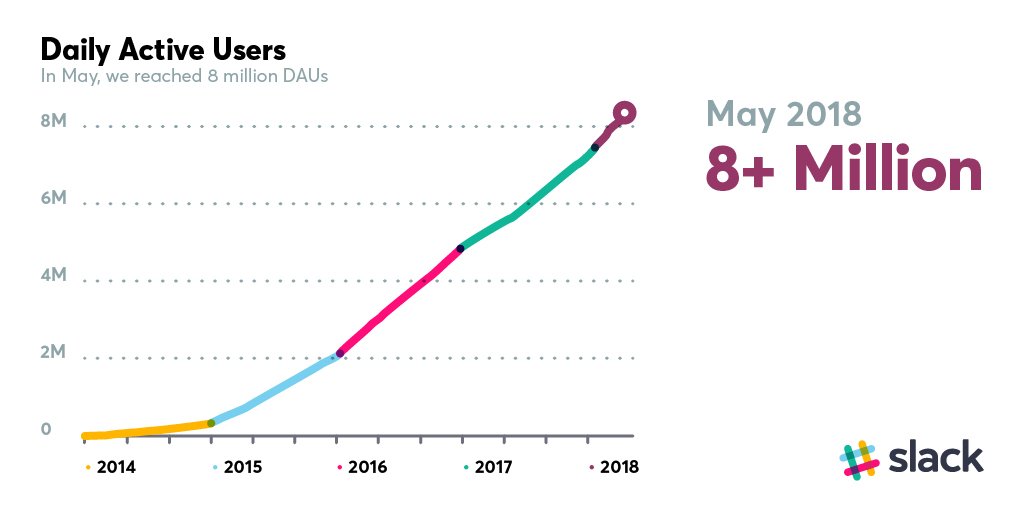
Growth chart for Slack’s daily active users [Source]
Oh, and did I mention they did ALL of this without a million-dollar marketing technique, a fancy email strategy, or a pushy outbound sales team?
Actually, it wasn’t until recently that Slack even bothered hiring salespeople and they managed to become a $1.1 billion company before bringing on a CMO.[1][2]
So, how did Slack actually do it?
Let’s find out.
Table of Contents
%(tableofcontents)
[Tip #1] The 4-Step Word-Of-Mouth Marketing Hack That Generated 8,000 New Wallet-Ready Customers In 1 Day
Before we talk about Slack’s overall strategy, we first have to talk about its astonishing initial growth.
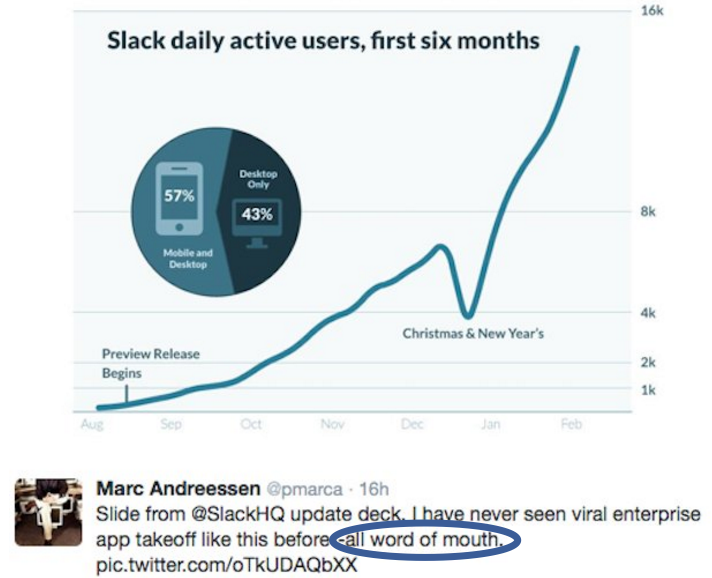
A tweet by Marc Andreessen on Feb 10, 2014 [Source]
Most of Slack’s initial growth was thanks to word-of-mouth marketing (and actually, even today this continues to be Slack’s #1 priority).
The initial word-of-mouth spread is at least partially attributed to Slack’s famous founder: Stewart Butterfield. Before Slack, Butterfield was well-known as the founder of the photo sharing platform, Flickr.
As expected, Butterfield had the benefit of a lot of contacts, including those in the media, that he could leverage to get the word out.
But this doesn’t mean you can’t replicate a lot of what Butterfield did to generate product hype and get feedback to make your product the best it can be. Butterfield followed a 4-step sequence.
Step 1: Once you have a workable product, convince everyone you know to try it out (for free, of course) and give you customer feedback.
As Butterfield recalls in an interview, just a few months before Slack’s beta release in May 2013, he said, “We begged and cajoled our friends at other companies to try it out and give us feedback. We had maybe six to ten companies to start with that we found this way.”[3]
Slack’s goal with this was to iron out any issues before their product hit the market while also starting to generate some awareness. Plus, this gave Slack their first few testimonials from Medium, Rdio, TGC and Cozy.
Here is the first version of the Slack website on Aug 19, 2013 with testimonials from Butterfield’s friends at other companies:
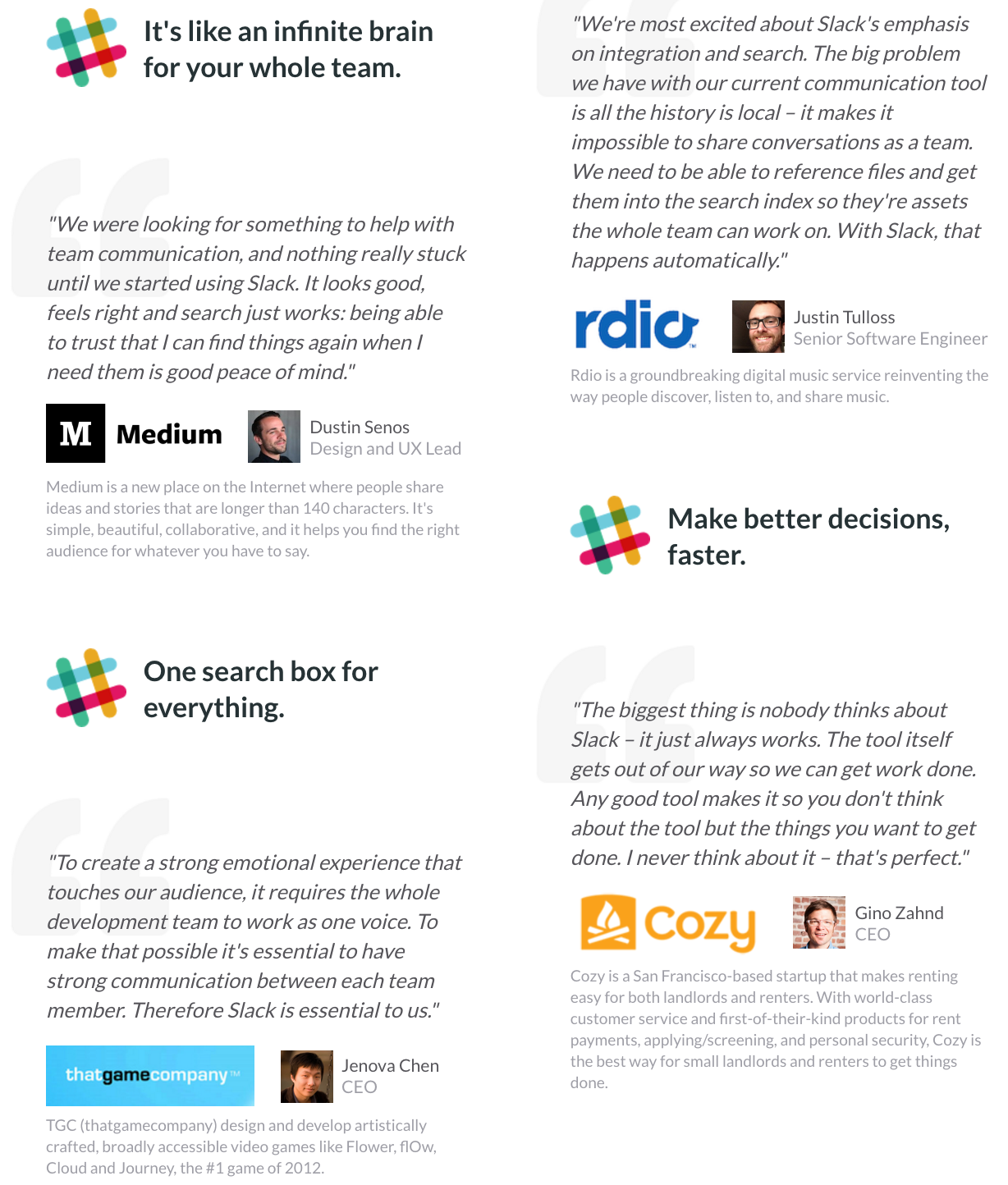
Step 2: Find an interesting “hook” that’ll help you spread the word…and then make sure it keeps spreading.
Slack could have gotten a lot of awareness just by leveraging Butterfield’s fame. But they moved beyond that to create an interesting hook (and this hook is exactly what you should focus on if you don’t have someone famous onboard).
The hook was: Slack is out to “kill email.”
Basically everyone finds email annoying. So, making this the “hook” was a great way for Slack to grab people’s attention.
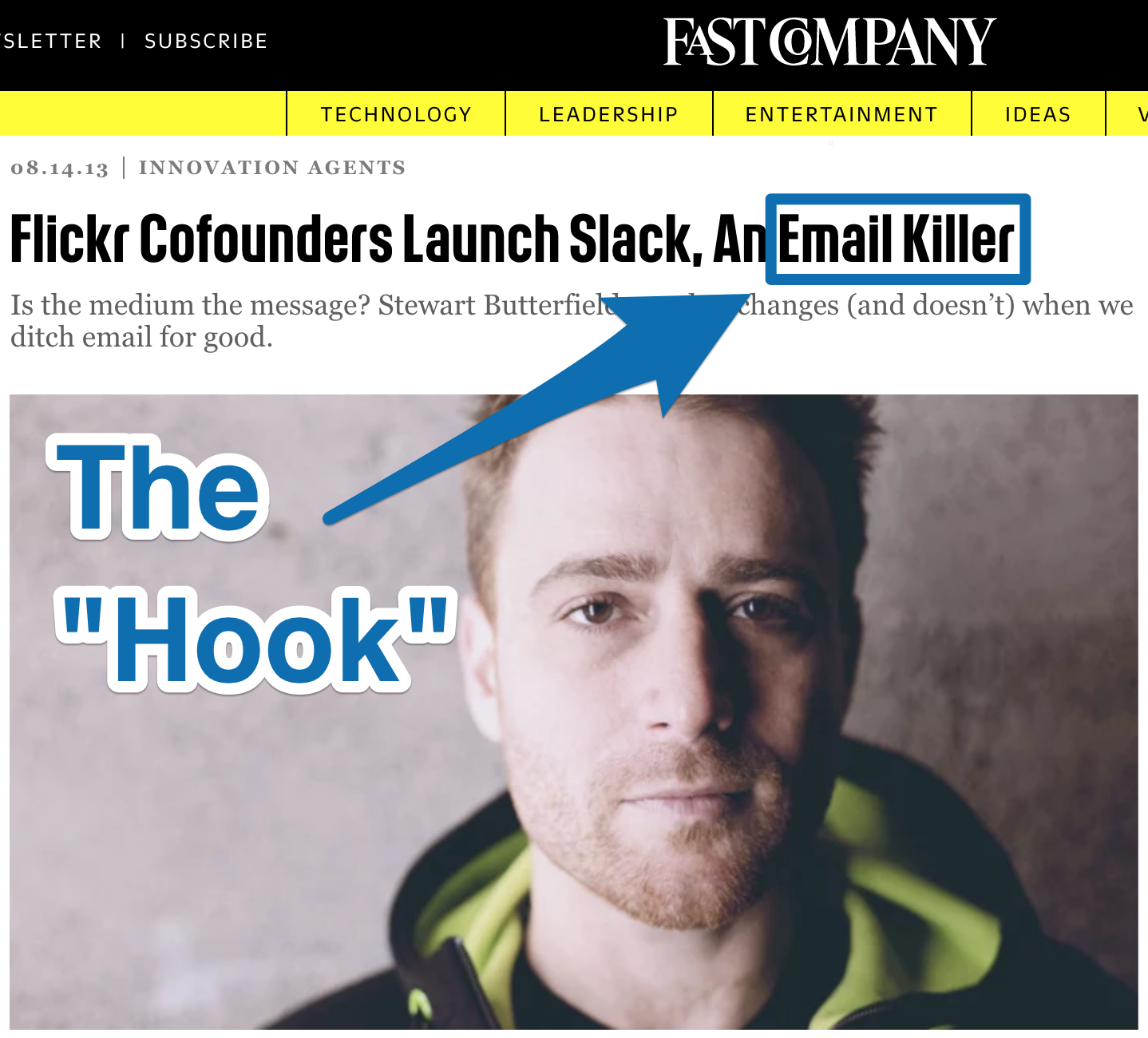
Just look at the titles of some articles that were written about Slack pre-launch:
- “Flickr founder plans to kill company e-mails with Slack” (CNET)
- “The Co-Founder Of Flickr Wants to Replace Email At The Office” (BI)
- “Flickr Cofounders Launch Slack, An Email Killer” (FC)
Once you have that hook, don’t underestimate the power of traditional media in getting it out there. Pull all the strings you can.
For some more inspiration, check out Sumo’s easy two-step process for getting media coverage here.
And once you’ve got that media coverage, make sure it doesn’t fall flat.
According to Butterfield, just getting the articles published is only 20% of the key to media success.
“The other 80% is people posting about that article. I almost never go to news sites–it’s overwhelming how much content is out there. But I will pay attention to what my friends are picking up and sharing.”
In other words, don’t let your article die a sad, slow death just because it wasn’t reshared. Promote your content on social media, community forums and places you’ve never thought of to get more traffic.
Step 3: Invite people to try out your preview release.
Slack’s initial request for feedback and successful media blitz worked – in August, 2013 Slack gave people the chance to request invites to try out their preview release… and 8,000 people did so on the very first day. Two weeks later, that number had almost doubled.[4]
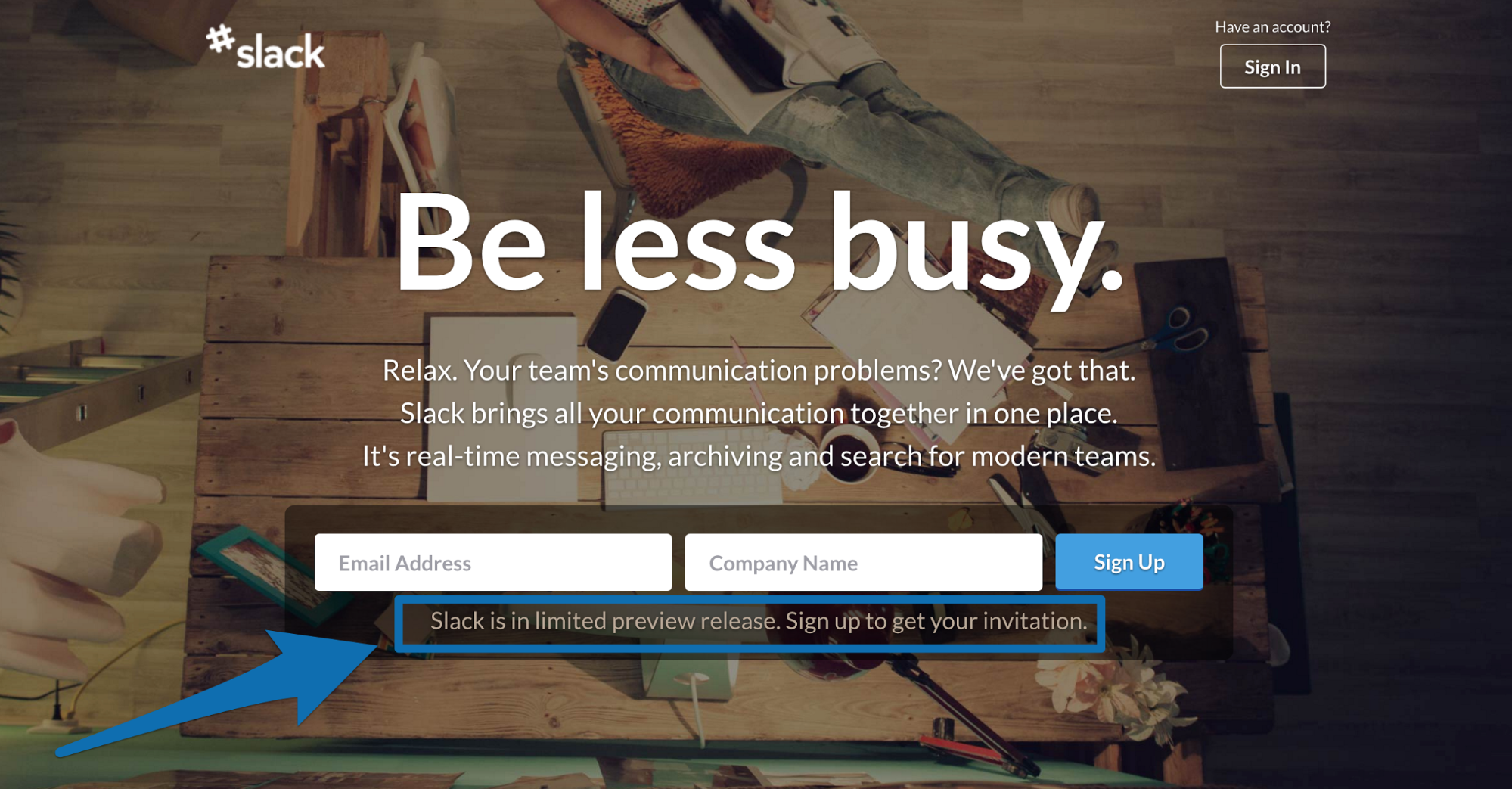
Golden Nugget: Even if your product is in beta, don’t call it that. As Butterfield says, “that was essentially our beta release, but we didn’t want to call it a beta because then people would think that the service would be flaky or unreliable.” Slack called it a “preview release” instead.
Milk this beta-testing period for all its worth. Butterfield says, “beta-tester feedback is crucial to finding those little oversights in a product design.”
In other words, this is your chance to get feedback and make your product something people will absolutely love by the time you launch it.
And the more people love your product? The more people that’ll be talking about it (to get you that viral word-of-mouth marketing growth).
Step 4: Launch your product to the public!
After you’ve finished your testing period and managed to generate some awareness, open up your product to the public. (Slack did this 6 months after their preview release in February, 2014.)
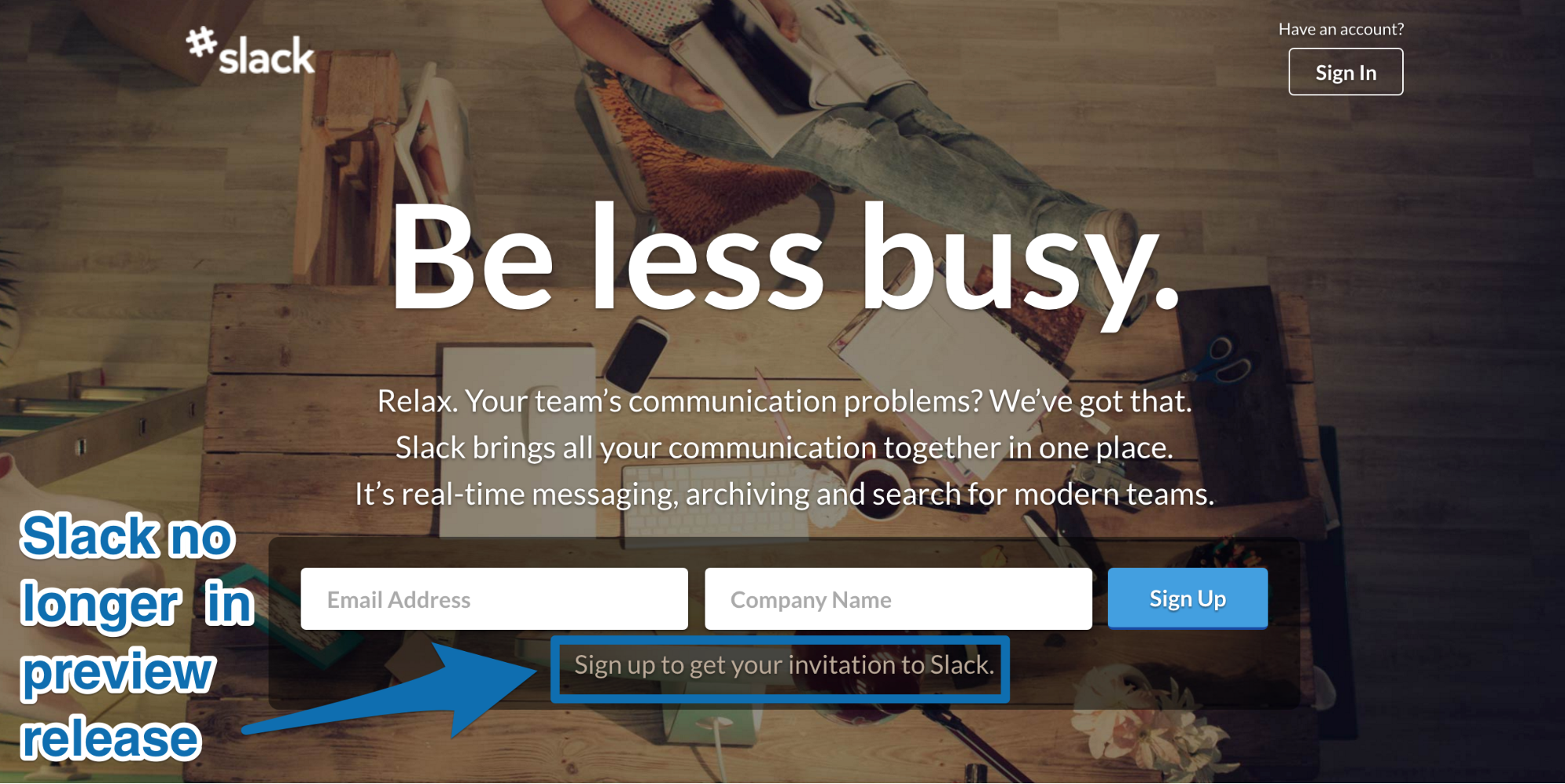
Slack continues to rely heavily on word-of-mouth marketing and on brand building to generate organic views to their website.
Here is a breakdown of the 108,600,000 website visitors Slack generates today:

This is Slack’s public facing main site. As you can see, the majority of Slack’s traffic comes from direct sources… meaning 91.35% of those 108.6 million monthly visitors are going to the website directly (BTW: 108M+ monthly visitors is 5x HubSpot’s 20M+).
But given that Slack has 4+ million daily active users, a very high percentage are users heading to the website to login.
This high amount of direct traffic can also be attributed to that ultra-powerful word-of-mouth awareness that Slack worked so hard for from December 2012 up until February 2014.
In other words, since so many people already know Slack by name, they just type Slack.com directly into the browser.
Here are the keywords that really bring the most amount of traffic to Slack:
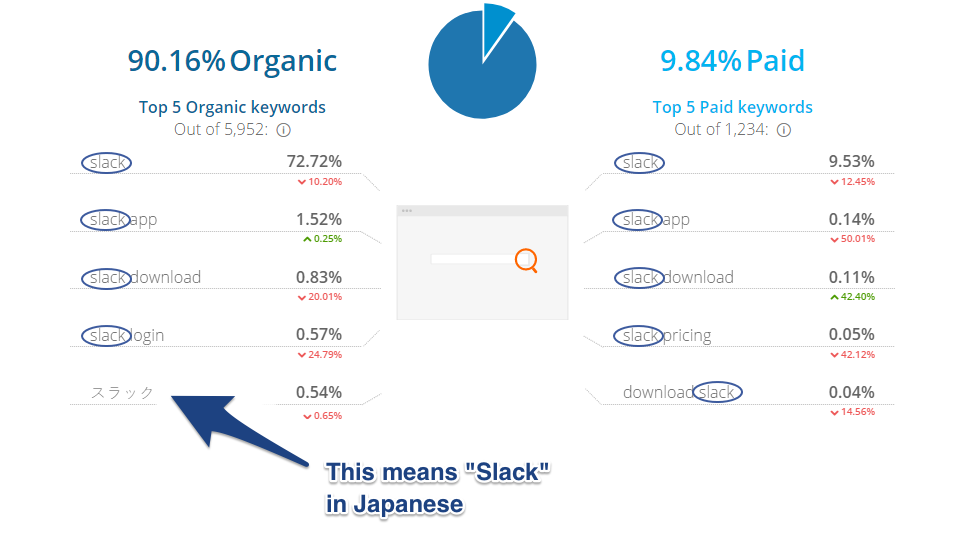
Slack's Referral Traffic [Source]
What sticks out to you? The word ‘Slack’ shows up in every single one!
Even the 5th organic keyword is just the word “Slack” in Japanese. Japan is Slack’s biggest market outside the United States (see proof below).
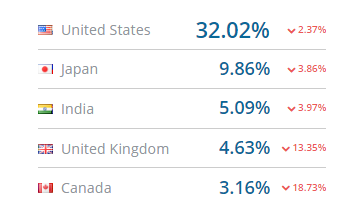
Slack’s traffic profile by country
Slack’s other top keywords, beyond the branded ones, usually relate directly to their product offering (ie: messaging, team communication, etc).
This all goes back to Slack’s awesome word-of-mouth brand awareness. Because of it, Slack doesn’t put huge amounts of focus on content marketing or their SEO – their brand name and product offerings do a lot of the work for them.
The takeaway: Noah said it best in this Tweet…
The secret to marketing is…. Build a great product.
— noah kagan (@noahkagan) January 9, 2017
Slack didn’t do this overnight like most people think. They started building the product in December, 2012 based on their own pain point, begged friends to use the product in May 2013, preview released the product in August 2013 and officially launched to the public in February 2014.
14 months of hard work to generate 8,000 new wallet-ready customers in 1 day.
P.S. Do you have a cool, new product? You can reverse engineer your own word-of-mouth marketing and get your brand known by submitting your great product on AppSumo.
[Tip #2] Reverse Engineer This 60 Second YouTube Product Video With 15,000,000 Views (Hint: “Animals!” Curiosity-Gap)
Here’s a breakdown of the traffic Slack gets from social media:
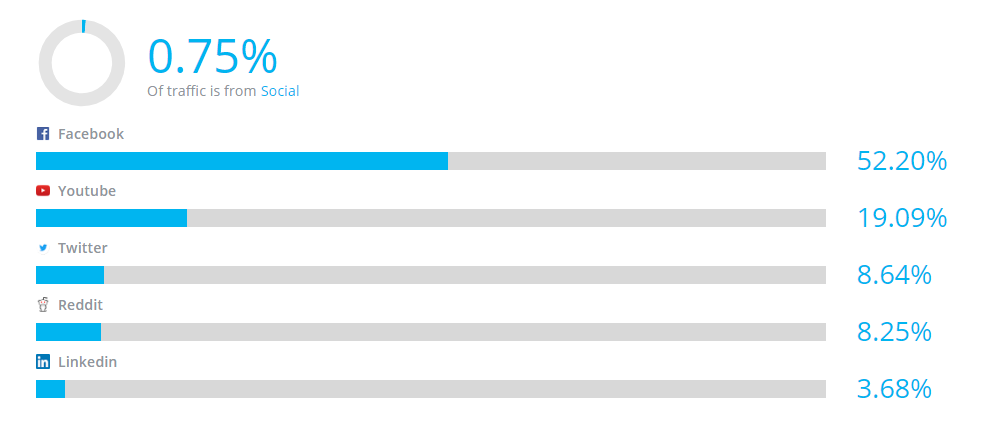
Altogether, Slack gets 800,000+ views monthly from social media.
As you can see, Facebook is a major driver, pulling in half of all this traffic. Though Slack have amassed a lot of followers on Facebook, it seems they use Facebook primarily as a tool to get readers elsewhere.
To start, their cover photo isn’t used to promote Slack itself, but to drive people to their podcast:
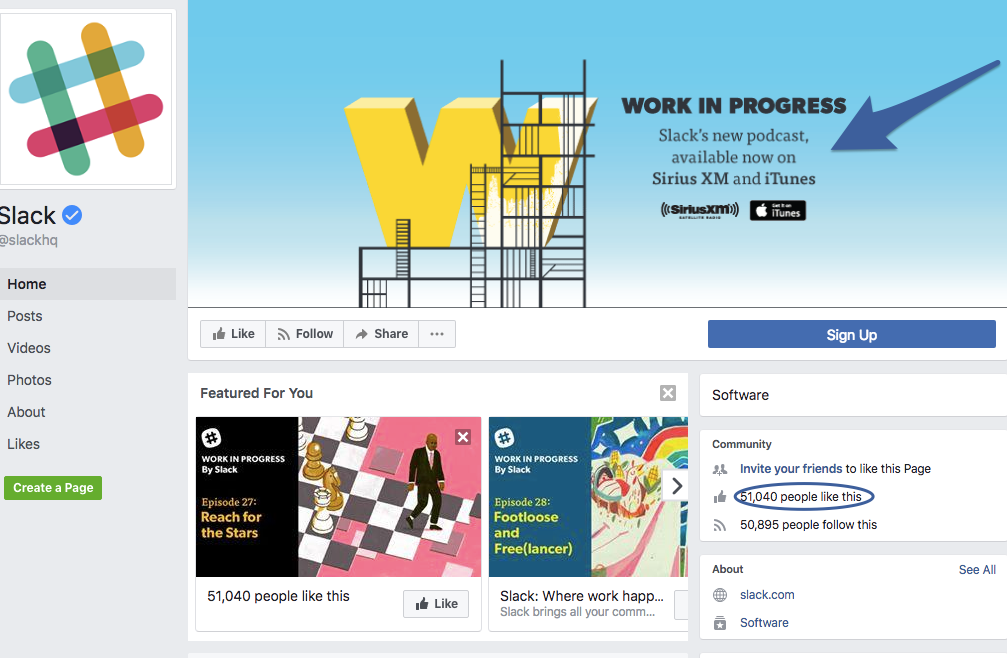
And their pinned post of at the top of the page directs fans to other methods of contact (in other words, they are trying to pull communications off of Facebook and onto other platforms):
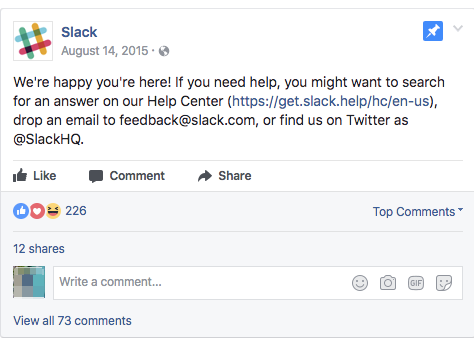
YouTube is Slack’s next biggest source of social media traffic and from what I can tell, it is Slack’s #1 social customer acquisition channel. It pulls in approximately 155,000 visitors monthly.
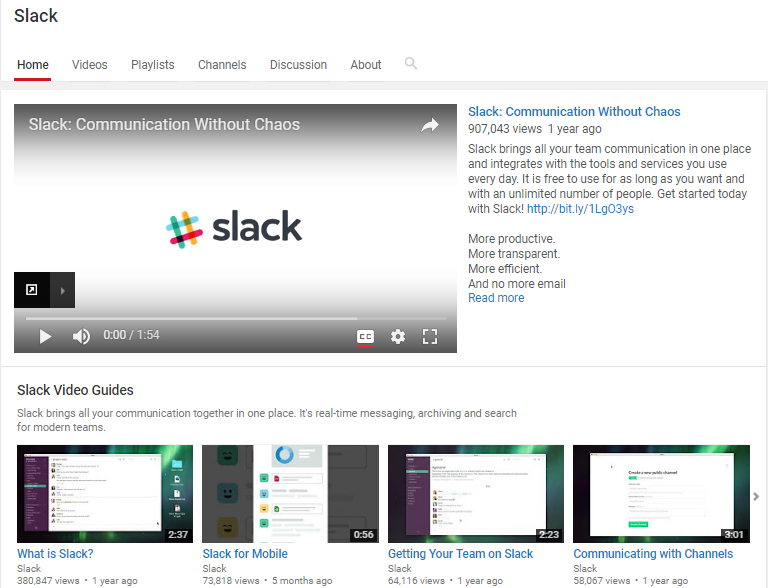
Slack’s YouTube channel is a combination of general Slack content, tutorials, and case studies.
But if you sort Slack’s videos by the most popular, you’ll notice that the best performing videos fall into a different category; namely, they are TV ads that Slack actually ran.

Repurposing these successful TV ads as YouTube video content has worked extremely well with the top video claiming more than 15,000,000 views.
Plus, the clever folks at Slack knew just how to get those who enjoyed the video interested enough to click on Slack’s website: a CTA that goes to Slack’s website but doesn’t make any mention of what Slack actually is.
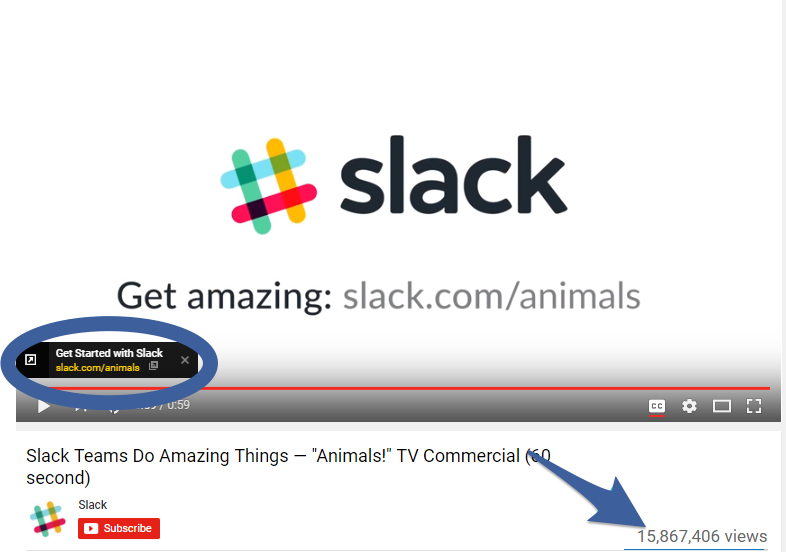
Since YouTube has such a wide-ranging audience, many of whom might not know what Slack does, this was a great way to generate further interest and entice viewers to click.
If they had mentioned in the CTA screen that they were a messaging app, likely many people wouldn’t have bothered to click through because they wouldn’t think this was a company relevant to them.
Also, notice the unique tracking URL Slack is using to measure their traffic from this video campaign. It is easy to remember and redirects to their homepage (when you see “slack.com/animals” you get curious and want to know what it’s all about).
Slack is using a direct response marketing tactic called the “curiosity-gap” to get TV viewers to stop what they’re doing and visit their website, and to also get more clicks on YouTube.
(P.S. Grab 18 more YouTube growth hacks from the pros in this Sumo-sized YouTube growth article)
Check out Slack’s full one minute video here to see exactly what I mean:
Click here to reveal the agency Slack used to create the video above
Finally, although it takes up a smaller portion of the pie, we can’t not talk about Twitter. In fact, Twitter has actually been Slack’s most important social media platform.
Slack founder and CEO Stewart Butterfield said:
“We bet heavily on Twitter. Even if someone is incredibly enthusiastic about a product, literal word-of-mouth will only get to a handful of people – but if someone tweets about us, it can be seen by hundreds, even thousands.”
In other words, Twitter played a huge role in Slack’s viral word-of-mouth growth. Slack’s Wall of Love is a perfect example of this.[5]
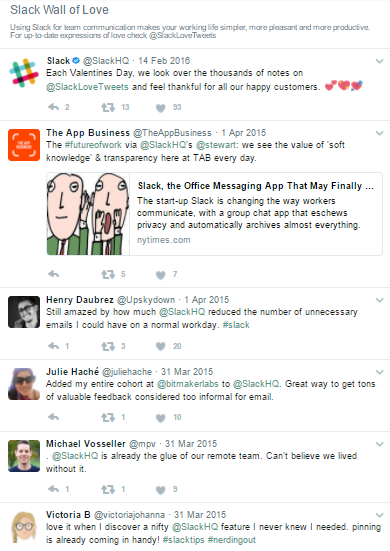
People can tweet to @SlackLoveTweets to show their expression of love for Slack.
As for Slack’s tweets themselves, they’ve helped Slack out in a few different ways:
- They helped Slack build brand awareness and define their company’s voice (a voice that’s been so distinctive, they even wrote a Medium article about it).[6]
- They help Slack keep their users up-to-date on changes and improvements.
- They give Slack a venue for getting customer feedback and communicating with customers.
Twitter as a venue for customer communication has been HUGE for Slack. They rely heavily on Twitter for dealing with customer support issues and getting customer feedback.
Today, Slack’s customer support team has 18 people alone with a group of 6 making sure Twitter is covered 24/7.
What Slack’s use of social media should teach you is this: social media is about a lot more than just driving traffic and getting clicks. It also gives you the chance to connect with your customers and help make your brand memorable.
The takeaway: When it comes to social media, you need a different strategy for each social media platform (side note: this is also exactly what Tony Robbins does to get such massive engagement and followers across his social media platforms). Slack leverages each platform in the following ways:
Facebook: to update fans on their blog articles, podcast, event and places they've been featured.
YouTube: to drive customer acquisition with professionally produced product videos and smart direct response calls-to-action.
Twitter: to drive viral word of mouth awareness with 24/7 customer support.
[Tip #3] Sponsor Every Podcast In Your Niche. Cut The Losers. Keep The Winners.
Slack is very familiar with the podcasting world.
Before creating their own podcast, Slack dabbled (a lot) in sponsoring podcasts. Slack’s first CMO, Bill Macaitis, made them an instant marketing priority.
In just a matter of time, Slack was sponsoring about 10 podcasts of all very different audiences. These included Startup (a podcast for entrepreneurs), Reply All (a podcast about the internet) and 99% Invisible (a design podcast).
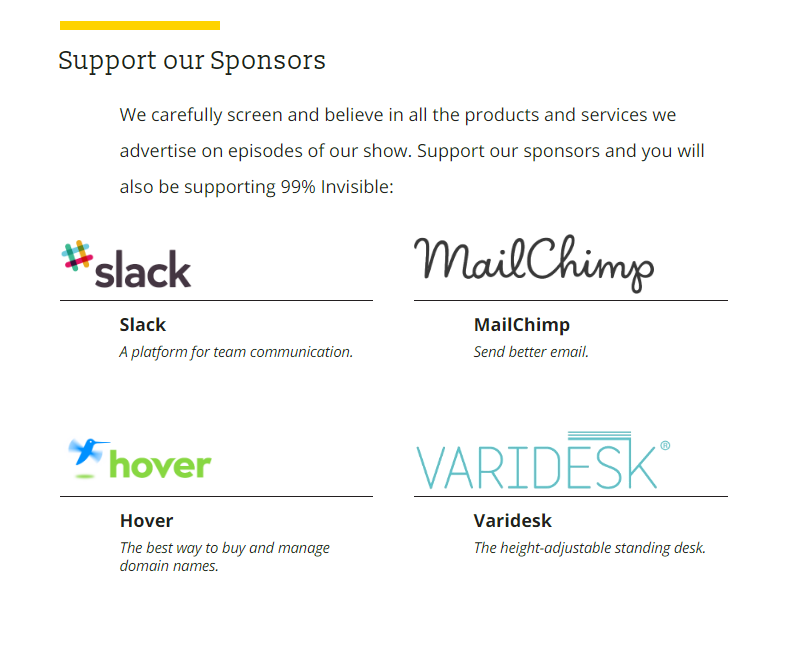
The key here isn’t necessarily sponsoring podcasts that have monster audiences (although this obviously helps) but sponsoring ones that have loyal audiences that regularly interact with and trust the podcast host.
Beyond this, Slack has also branched out into creating two very distinctive podcasts of their own.
The first of these was a series called “The Slack Variety Pack” podcast.
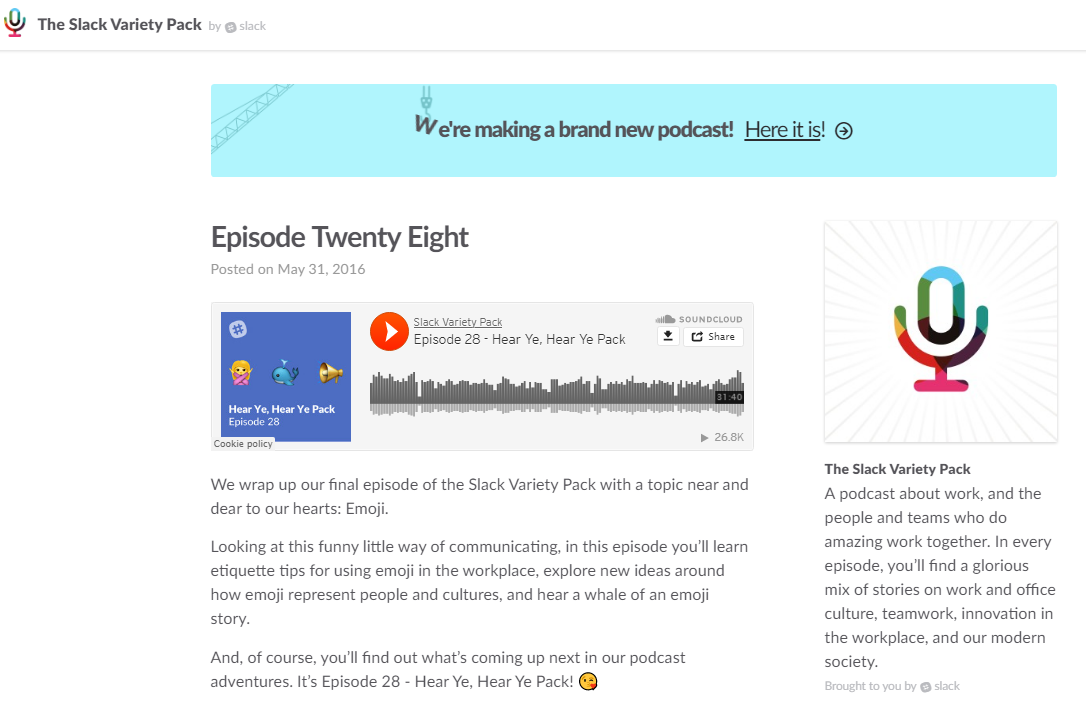
The podcast itself was pretty weird and offered a very unique voice in a sea of podcasts with repackaged business advice.
Slack’s SoundCloud page explained it best: “Think of it as This American Life meets Office Space meets Monty Python’s Flying Circus.”
Obviously, the podcast resonated with the audience as there were nearly 2 million listens over the course of 15 episodes.[7]
But perhaps the most important thing to take note of is how Slack used this podcast to promote themselves without sounding like a sleazy hard sell. As Macaitis explains, the best podcasts “aren’t trying to sell you something.”
And it looks like Slack found just the right balance. There are 3 sneaky podcast promotion techniques Slack is using:
Slack’s podcast promotion technique #1:
Beginning each episode with a quick announcement that the podcast content is “brought to you by Slack” and asking them to visit Slack.com to “change your working life forever.”
Slack’s podcast promotion technique #2:
Integrating non-salesy CTAs following specific podcast stories (such as asking people to tweet their own stories to @SlackHQ for a chance to be featured on the podcast after the hosts discussed a crazy office story).
Slack’s podcast promotion technique #3:
Inviting listeners to share their thoughts and feedback with #SlackVarietyPack at the end of each podcast.
The Slack Variety Pack may be finished, but Slack now has another new podcast that uses similar promotional tactics.
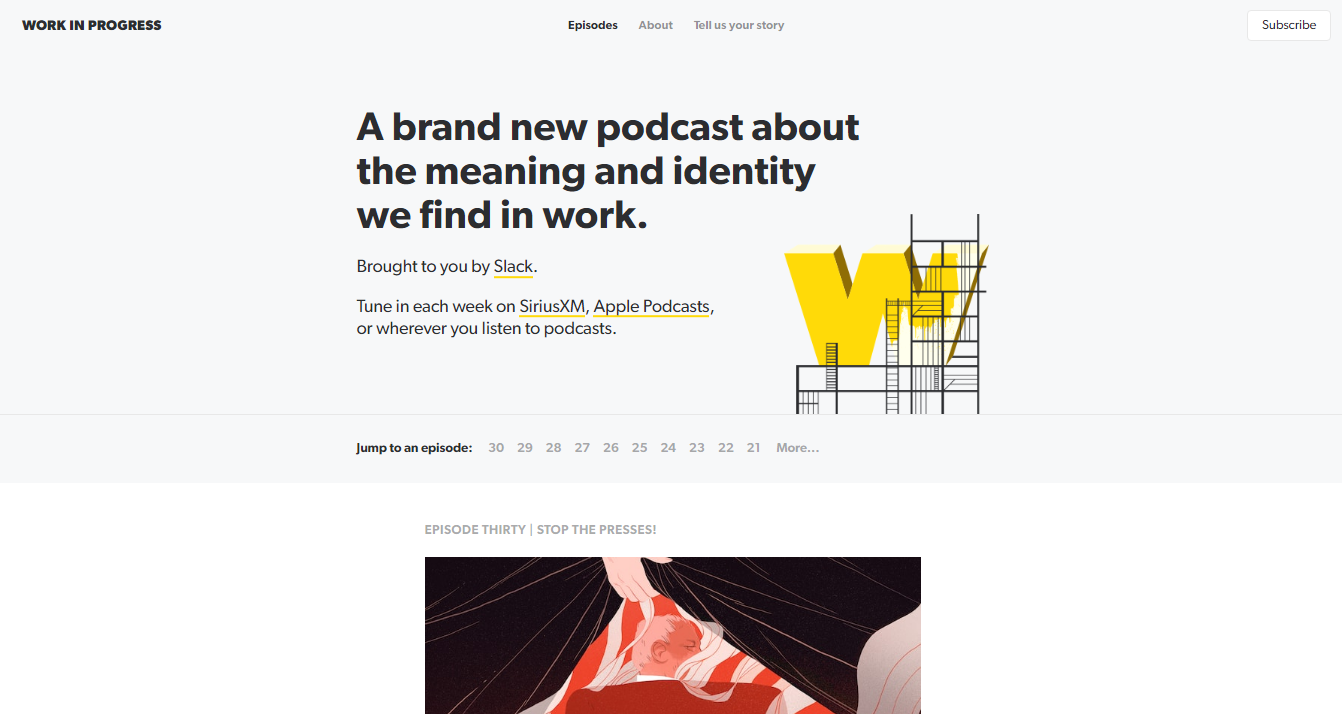
Golden Nugget: Instead of just writing up a transcript for each podcast episode like most companies do, Slack repurposes the content of each podcast to make a Medium article and get more exposure. Each Medium article begins with the full embedded podcast episode and a short reminder that their podcast exists.
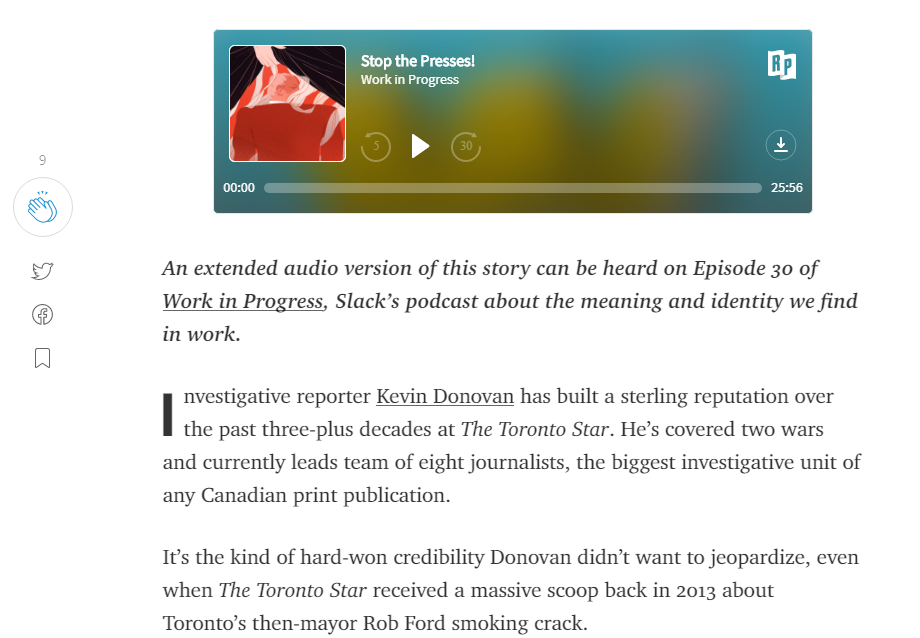
The takeaway: Find podcasts that your potential audience members are listening to and see if you can become a sponsor (since Slack has a really big audience, they sponsored a lot of different types of podcasts to test which work). It’s an upfront investment, but as you track what works you can cut the losers and keep the winners.
If you want to start your own podcast and get it to grow… be different. You need to be known for something (Slack does this by running an entertaining podcast about the meaning and identity we find in work).
[Tip #4] Rank For Competitive Short Tail Keywords With This Category Leader Business Review Strategy
Slack has another organic traffic trick up their sleeves that you’re going to want to follow: they get themselves on review and comparison websites.
This means that people typing in more generic product search terms still find them.
Take a look at what happens when I search “team collaboration software”.
Obviously, Slack’s #1 slot under Google’s “software” bar at the top is going to help. But moving beyond that, all 3 of the top organic listings are review websites and comparison articles.
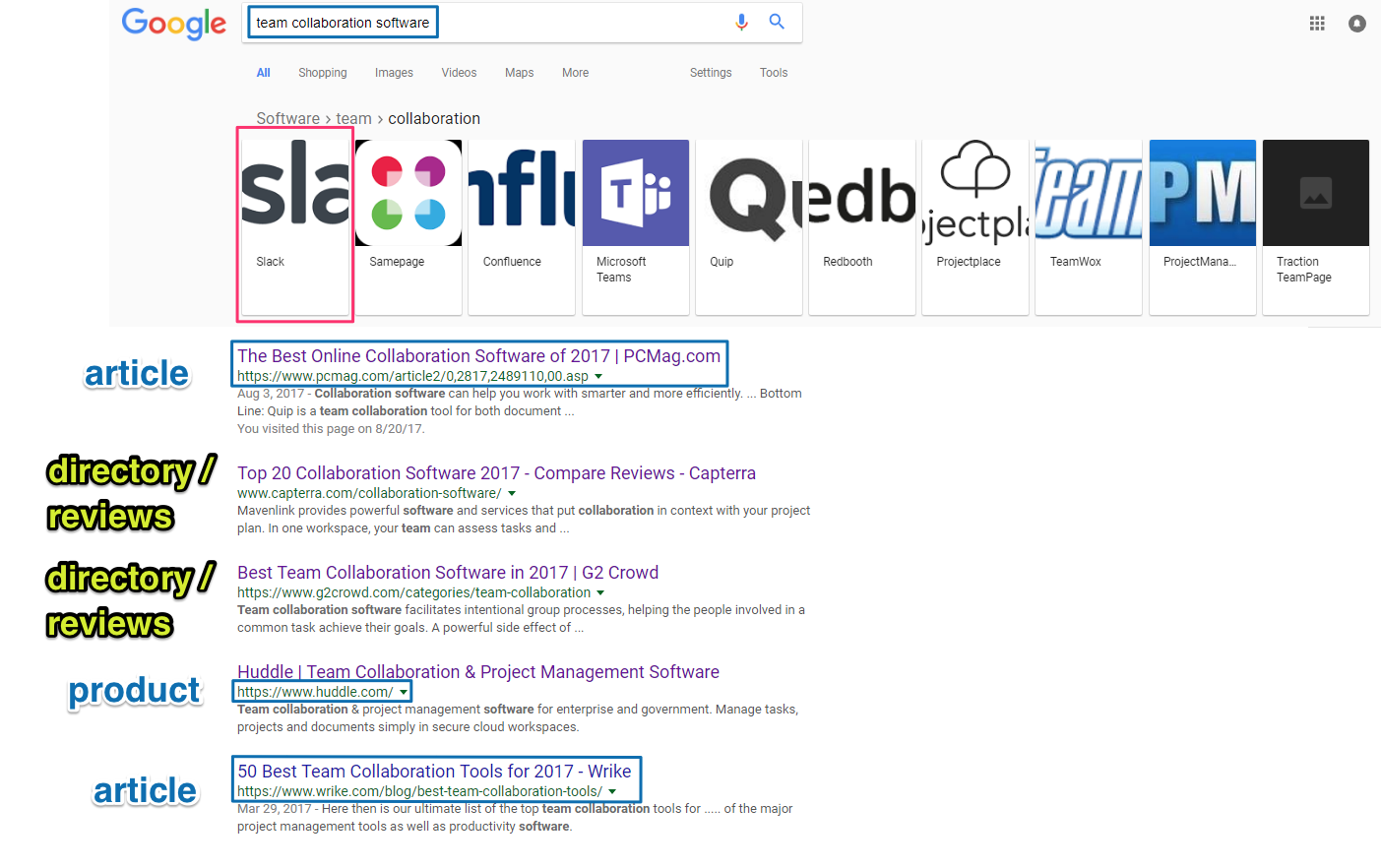
Golden Nugget: If Slack wanted to, they could compete for this keyword phrase by writing an in-depth comparative guide on the best team collaboration software. Then, they could collect reviews. You can try the same for your SaaS.
But keep in mind that creating content that outranks a big review/directory/comparison website will be tough, since they already have so much user generated content.
Luckily, Slack made the cut and shows up for anyone who clicks the first PC Mag link (so they didn’t need to resort to that nugget above):
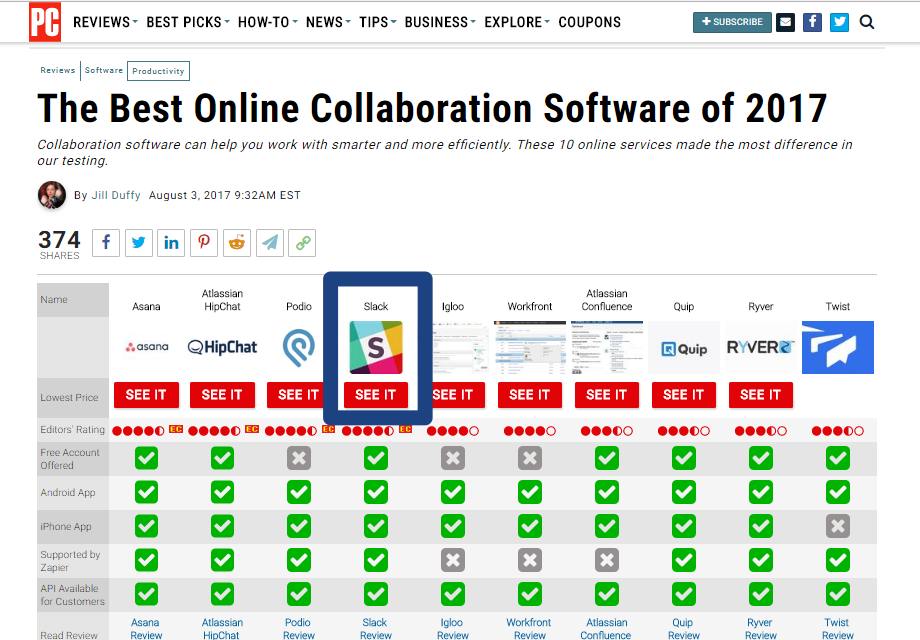
But of all the review websites listed above, G2 Crowd is the most interesting (and we’ll tell you how you can make it work for you in just a second).
Slack is absolutely dominating on G2 Crowd. Of the 10,000 products reviewed on the platform, Slack has the highest number of reviews. (4,043 reviews in total!)
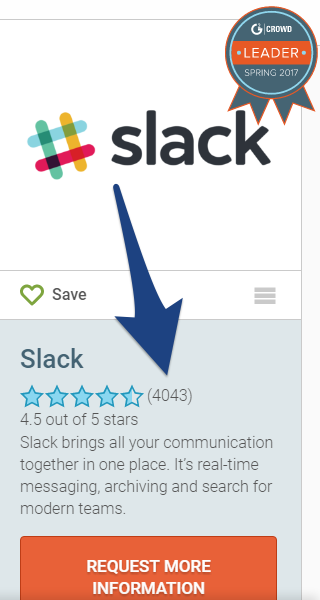
And they are one of the top performers on G2 Crowd’s crowdsourced “Grid”:
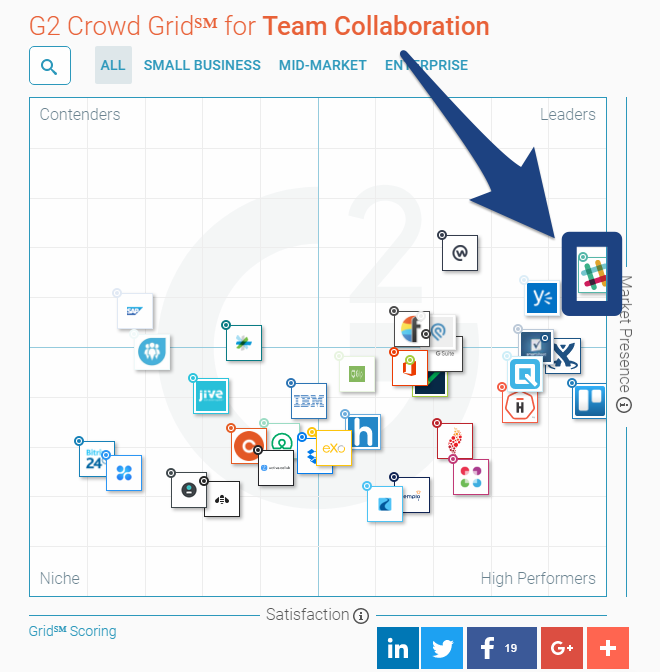
I got in touch with Godard Abel, co-founder and executive chairman of G2 Crowd, to get some more intel.
When I asked him why 4,043 people chose to put their Slack reviews on G2 Crowd and not some other random review platform, this is what he had to say:

And as Godard explains, Slack has seen some BIG payoffs by ranking so highly in G2 Crowd:

Obviously, that’s a lot of new visitors checking out Slack’s positive reviews. Some may be current customers coming to join in on the conversation. But plenty of others will be brand new prospects browsing reviews before making their purchase.
And you can bet, it’ll be hard for them to choose any other product but Slack after checking out Slack’s successful G2 Crowd profile.
How can you make sure people leave a review for you on G2 Crowd and other review sites?
This is what has worked for Slack, according to Godard:

As Godard says, this is hard to replicate. But to start, you need to make sure your product is signed up for all the top review sites relevant to your type of product. Otherwise, you’ll never get people leaving those reviews.
Just google “top review websites for (your type of product)” to find out what those are.
If you’re in SaaS, you’re going to want your product listed on places like G2 Crowd, Capterra, and GetApp.
Once your product is listed, you can give your customers some incentives to get those reviews rolling in (you’ll probably have to do a bit of experimentation to see which review platform makes sense for you to focus on).
One way you can do this is with an email campaign offering some sort of bonus. G2 Crowd uses a 3-step email campaign that offers Amazon giftcards to get the first 10-20 reviews:
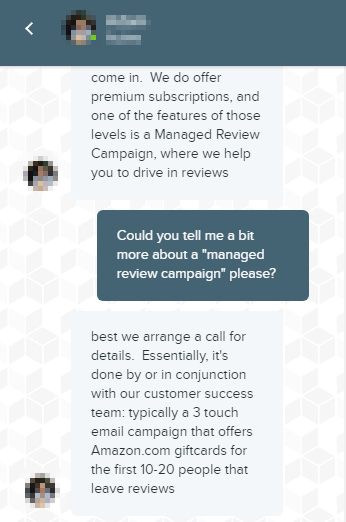
Whether you do this via a subscription or on your own, you can find other ways to incentivise customers to leave reviews – whether that’s with gift cards, discounts or small freebies. Here is another example:
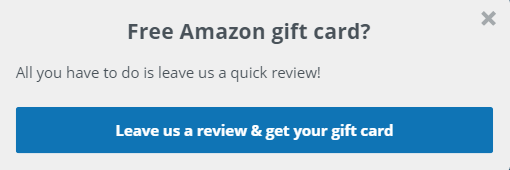
Golden Nugget: Use popup CTAs and welcome mat CTAs on your customer login pages to collect customer reviews.
I used the free Sumo List Builder Popup CTA in the example above. Just make sure you don’t ever design any of your popups to look like this.
The takeaway: Get yourself onto top review websites as much as you can. Then, set up an email campaign, popup CTA or welcome mat CTA to tell your customers that you will reward them for leaving a review (Slack does this with their G2 Crowd review page that generates them 4,542 visitors).
What if you don’t have the same level of brand awareness as Slack to pull off a top category ranking on a review site? Then make sure you nail your SEO and get yourself up in search engine ranking. Check out Sumo’s SEO Handbook for all you need to know.
[Tip #5] The One Strategic Integration You Can Do To Drive 200,000+ Monthly Unique Traffic
Now let’s take a look at Slack’s referral traffic. Referrals make up 3.34% of Slack’s total traffic, and here are Slack’s top 5 referrers:
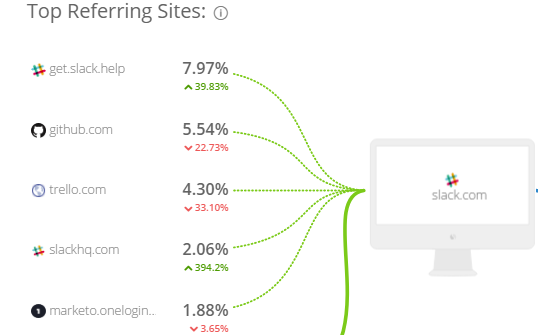
Of all these referrers, the second and third are the most interesting: GitHub and Trello.
As we just discussed above, Slack has a ton of integrations. And two of these are – you guessed it – GitHub and Trello.
If I click on the GitHub link in that referral image above, I end up on a GitHub page explaining how Slack and GitHub can be integrated.
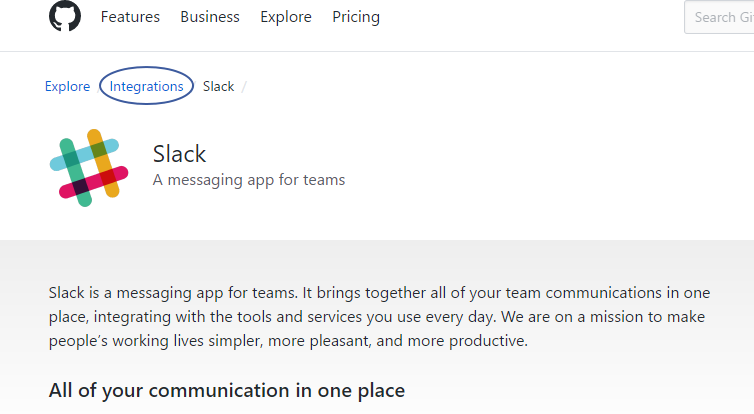
And if I click the Trello link, I end up on a similar integration page on Trello’s website:
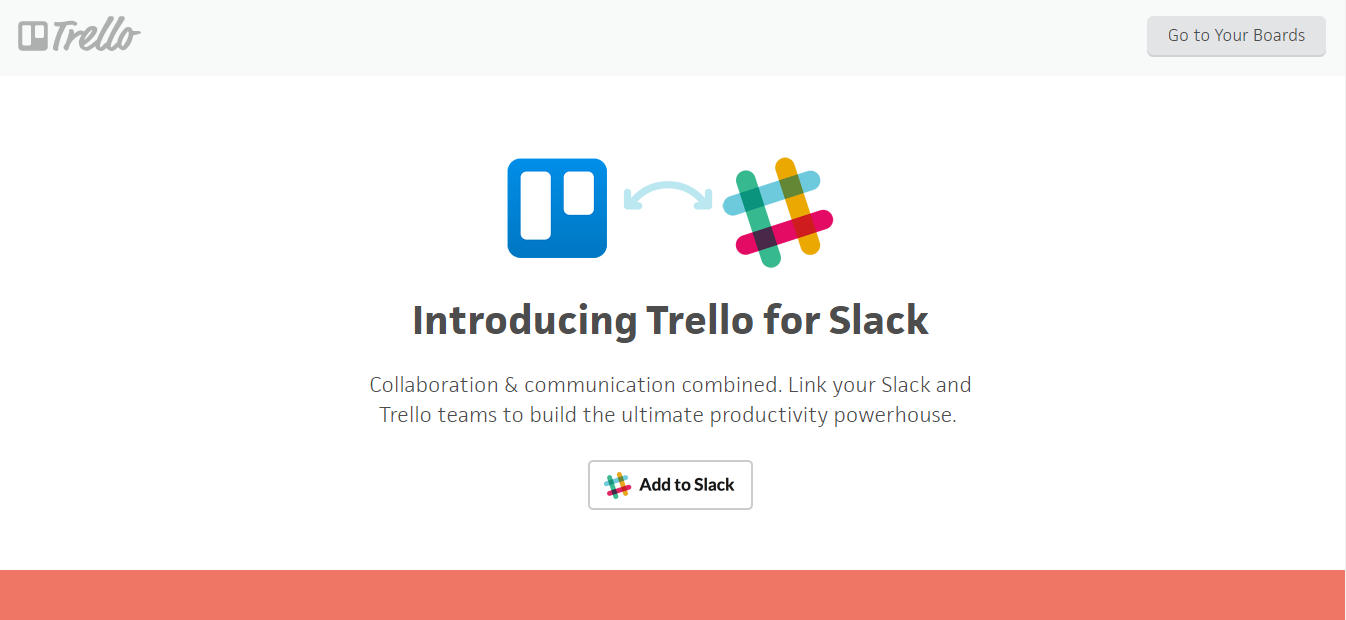
At first glance, it might not seem like the clicks from these two referrals are all that significant. After all, combining these GitHub and Trello pages only account for 9.84% of all referral traffic… and referral traffic only brings 3.34% of Slack’s total traffic.
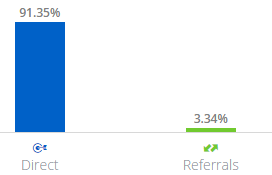
But even though these percentages may seem small, you first need to take into account the sheer number of visitors to Slack every month – 108.6 million!
And if you consider the percentages above out of Slack’s total monthly visitors, the numbers actually look pretty good. GitHub alone brings Slack approximately 200,000+ clicks monthly and Trello brings them 150,000+.
Not bad for something Slack doesn’t really have to do much for.
Just one strategic integration is part of what helped YouTube get so big, so fast (and we also found strategic integrations to play a super important role in our Shopify growth study).
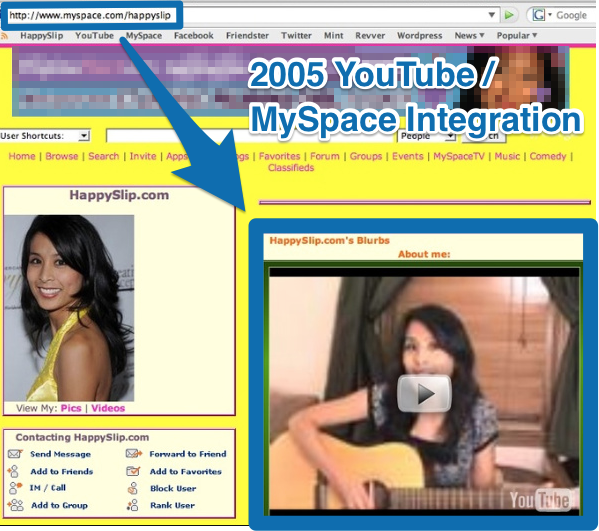
Back when YouTube first began in 2005 as an unknown company, they integrated with MySpace, thus tapping into the 25 million unique users MySpace had at the time… without having to seek these visitors out themselves.
Essentially, integrations let you piggyback off the success of another platform.
Slack has 1,000+ integrations (231 alone just in Bots apps) – meaning they are reaping A LOT of benefits and extra traffic because of them.
And of course, the 4th referrer is Slack’s Medium publication. Their Medium publication brings an extra 76,063 interested visitors to their main site every month.
On that note, let’s move on to analyzing Slack’s Medium publication in the next tip.
The takeaway: Identify the one product or service that your customers are already using and integrate/partner with them to piggyback off their success and drive new customers to your website (Slack does this with GitHub to generate 200,000 clicks per month and with Trello to generate 150,000 clicks per month).
[Tip #6] The Top 4 Medium Blog Posts You Need To Get 500,000 Monthly Blog Visitors With Your Content Marketing Side-Hustle
SlackHQ.com, also called Several People Are Typing – The Official Slack Blog, is Slack’s Medium publication.
Here are the publication’s main traffic sources:

Slack’s Medium publication is a combination of 4 main types of blog posts:
- Company and product updates
- Product tutorials
- Practical workplace tips
- Personal stories
This combination helps Slack:
- Generate an extra 70,000+ viewers to their main website monthly
- Keep their current customers in-the-know or encourage potential prospects with Slack updates and improvements
- Boost their search engine visibility
- Connect with their readers (whether they are already users or not) and continue building their brand name with their unique customer voice
Sounds like the perfect combination, doesn’t it? Let’s look at how they work in a bit more detail.
Medium article type #1: Company and product updates
If you look at Slack’s top performing Medium articles by social engagement, you’ll see that the first 3 all fit into this category.
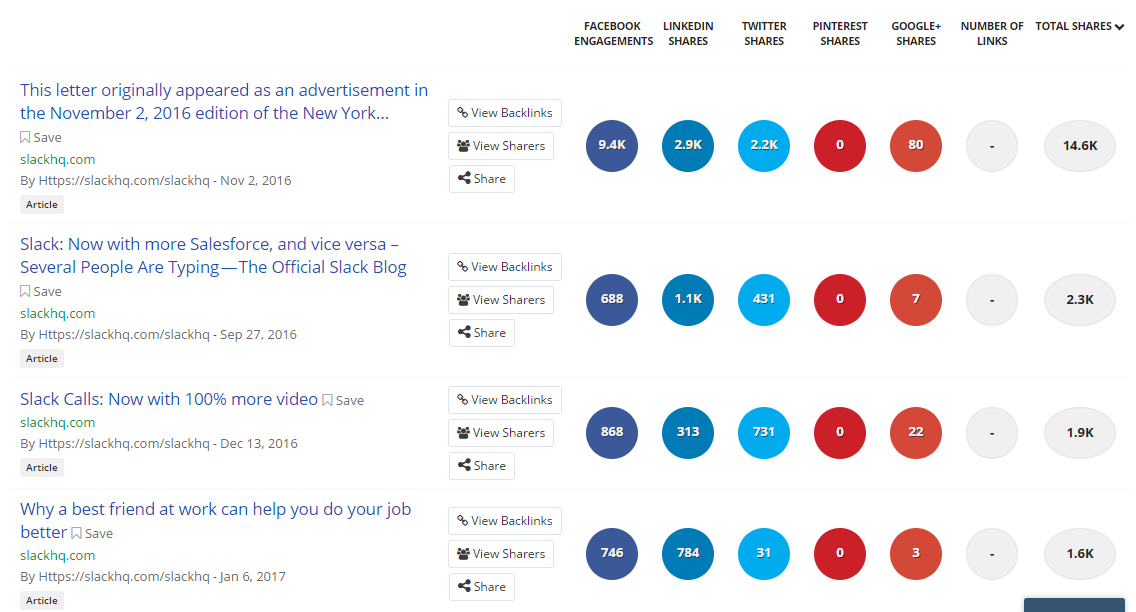
These type of articles are part brand awareness builders, part ensuring current customers know what’s changed and part attempting to impress new prospects.
Take note of how Slack understands the importance of their own brand name: the 2nd and 3rd title actually begin with the word “Slack.”
But just as important as the articles themselves are what the articles try to get readers to do.
The calls-to-action (CTAs) on most of Slack’s Medium articles are a variation of opening up a dialogue with their customers by asking them to reach out with questions or suggestions.
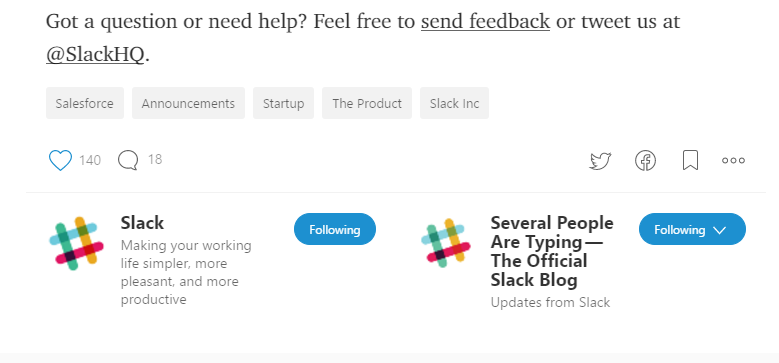
They also always link to their Twitter page in the CTA (read tip #2 again if you need a reminder why).
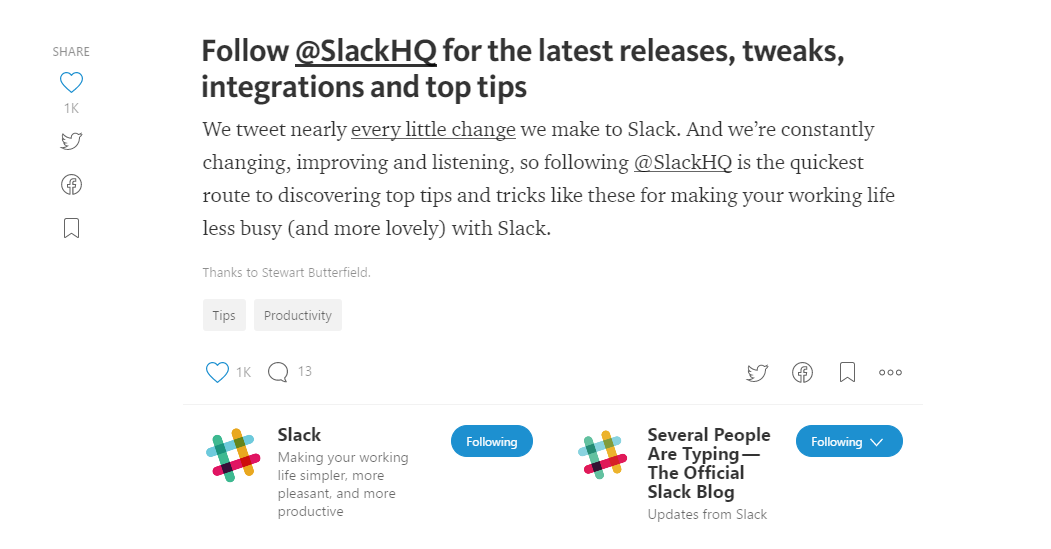
Medium article type #2: Product tutorials
Slack uses this type of article to pump up their SEO and get more people finding their Medium publication through search engines.
If you look at the traffic profile above, you’ll see that the second largest traffic source is Search clocking in at 11.45%.
And if you look at the organic search terms below, you can see that the top keywords are all branded.
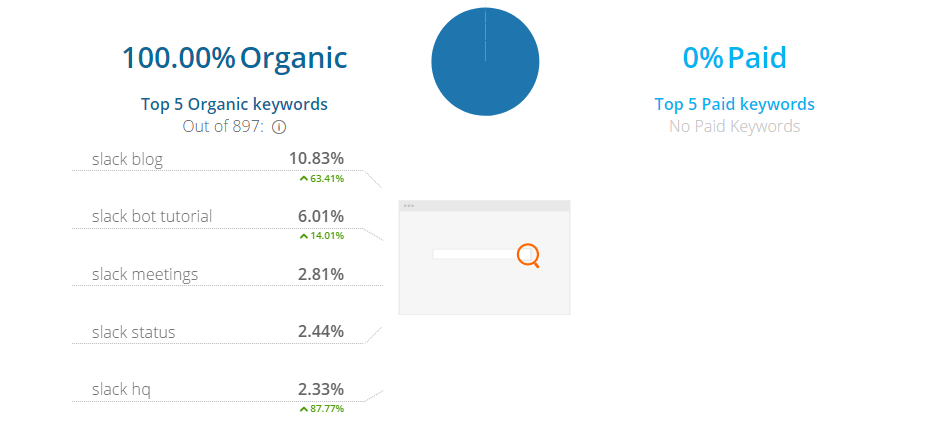
The most amount of organic traffic is coming from the keyword “slack blog”, but when you approach Slack’s main page, the link to the blog isn’t very obvious:
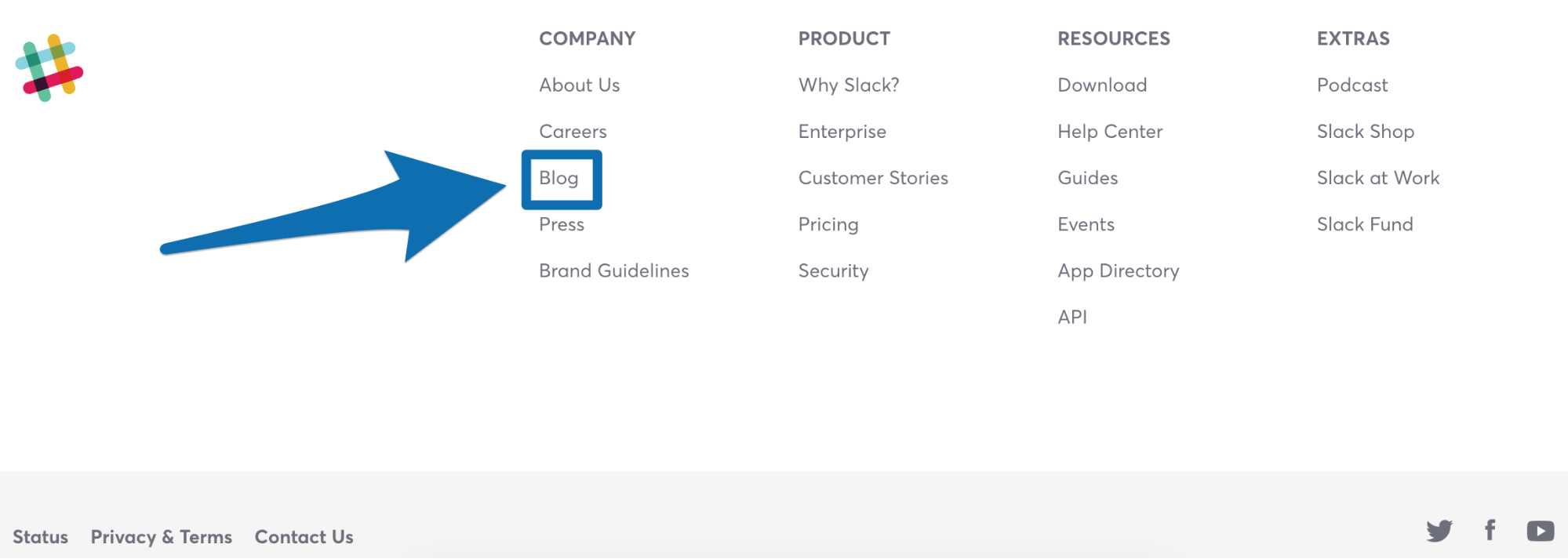
This accounts for the high number of people searching for the phrase “slack blog”. (After all, what kind of big business doesn’t have a blog?)
But beyond that, the middle 3 keyword phrases are customer search queries and questions about their product that Slack knew were common and thus decided to make articles about.
Here are the 3 specific pages generating that traffic (as per the 2nd, 3rd and 4th top organic keywords on the SlackHQ Medium publication):
- slack bot tutorial: A beginner's guide to your first bot
- slack meetings: Meetings that work (and don’t) in Slack
- slack status: Set your status in Slack
Including these type of articles not only gets more people from search engines onto the publication, but also gives Slack a clever way to provide customers with more product info without just referring them to a boring “help” page.
At the end of articles about product updates, the CTA often links readers to more product related information and gives a few links to other product updates they think their readers might like to know about.
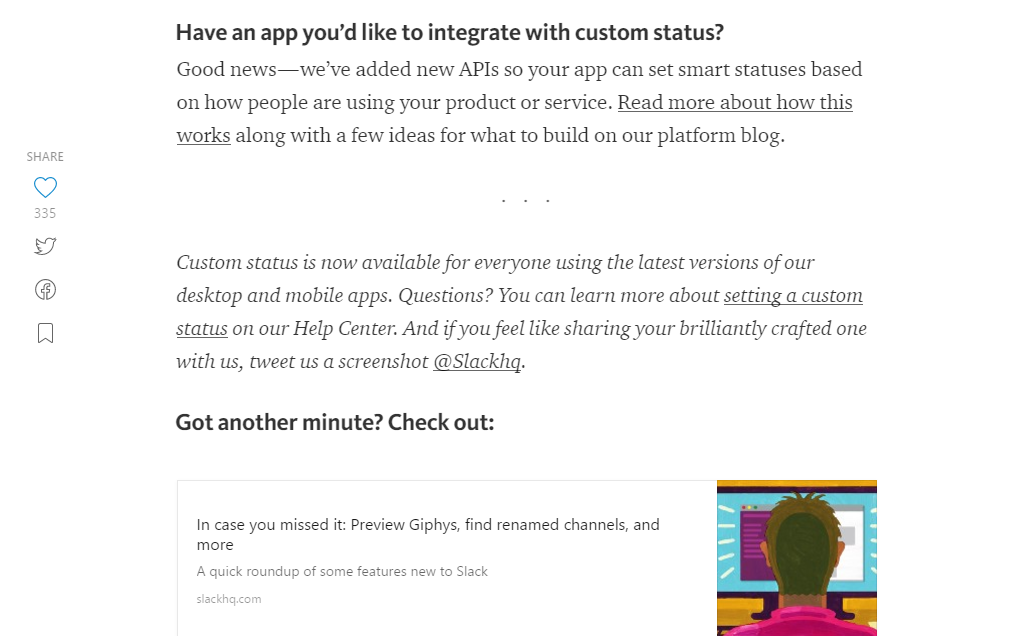
Medium article types #3 and #4: Practical workplace tips and personal stories
It’s these two last types of articles that have let Slack perform so well on the Medium platform.
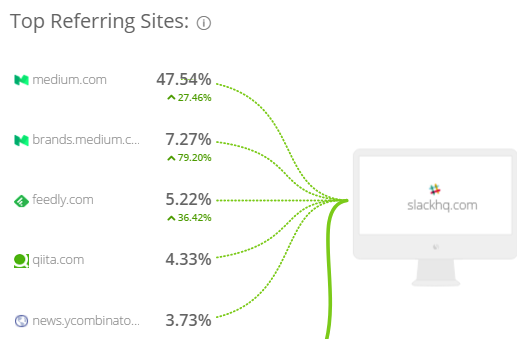
Slack HQ's Referral Traffic [Source]
Over 50% of the referring traffic to SlackHQ comes from Medium itself, as Slack has a strong Medium presence with over 125,000 followers and is featured first on the Medium Brands page.
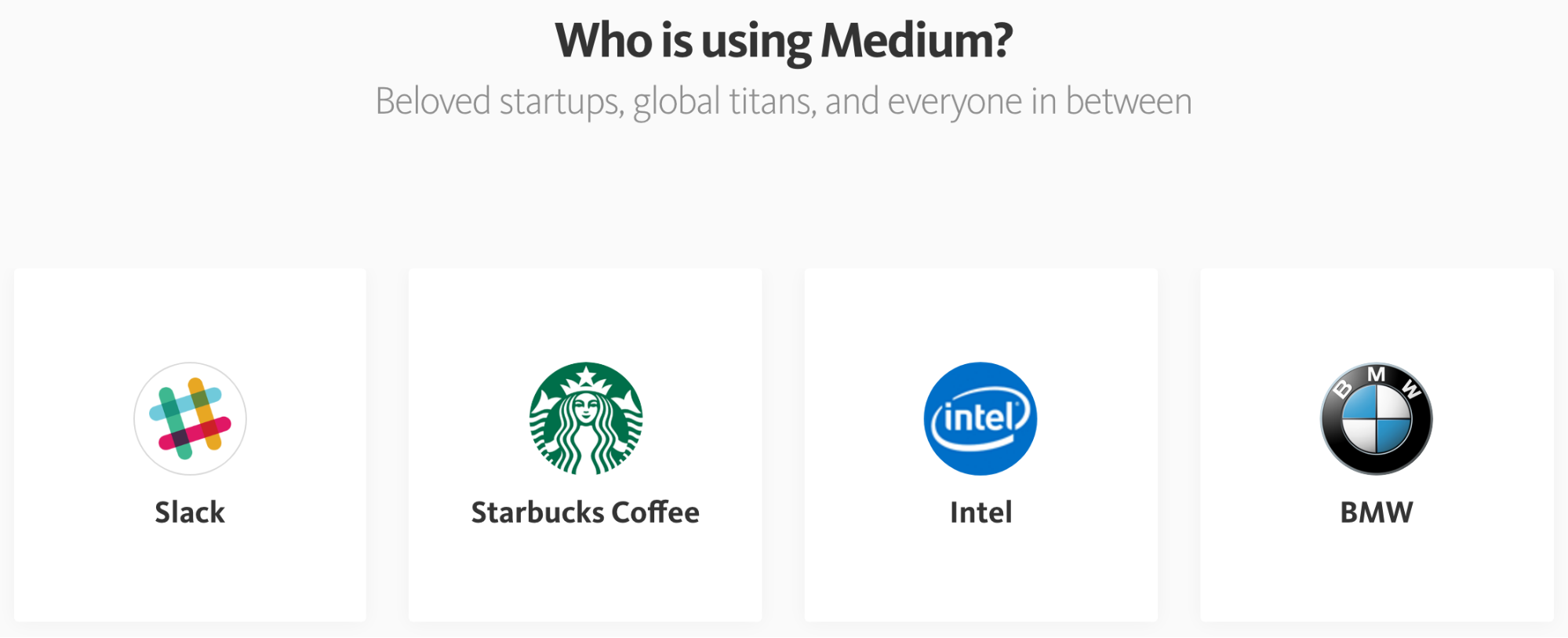
That page you can see pictured above accounts for 7.27% of SlackHQ’s referral traffic, but where is that top 47.54% of medium.com referral traffic actually coming from? Answer: Medium’s homepage in the ‘Popular On Medium’ section and the ‘Medium Daily Digest’ email.
By really finding their voice and tapping into the type of personal and real-life articles that perform well on Medium (like articles with workplace tips and stories), Slack often finds itself on Medium’s ‘Popular On Medium’ section or featured in the Daily Digest email that Medium sends to its subscribers.
![]()
For these types of articles, Slack often skips a CTA entirely. For this story-based article, the ending is just an image and blurb about the guest author.
This is how you know that Slack is not relying on these types of articles just to sell. Instead, they are here to build their brand, show off their unique company voice and perform well within Medium (so they have max outreach).
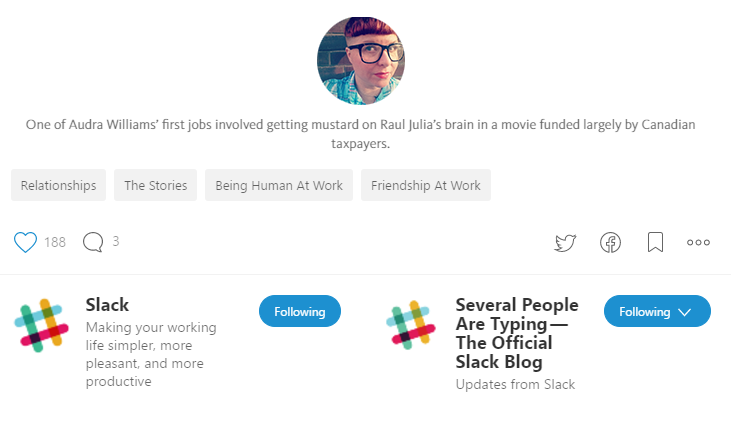
How can you do the same?
Build your Medium following and publish articles that Medium’s algorithm loves (ie: high read ratio, high amount of recommends, high comment count, etc… basically everything that comes to you when you create really good content and follow the 4 types of blog articles above).
One more thing to note is that Slack runs their blog solely on Medium and doesn’t have their own blog outside of it. More and more companies are doing this, finding Medium to be a great platform that can open them up to a whole new potential audience that they might not reach otherwise.
The takeaway: Use articles on your blog to provide product updates, product tutorials, practical workplace tips and personal stories. Give them an interesting headline with your branding and don’t hide all of your product updates inside your company help desk (Slack does this by publishing these 4 types of content on their Medium publication).
[Tip #7] The One Settings Cog You Can Change Inside Your Medium Publication To Get Over One Thousand Claps On Your First Medium Article
If you want to get more claps on your Medium articles than a Tony Robbins Unleash The Power Within event then do this…
This is a quick little hack to up your Medium game that works for more established businesses. If you already have a pretty strong social media following, then this is an easy and powerful way to have instant Medium success.
(But if you are “newer” to the biz world or don’t yet have much of a social media following, don’t worry! You can learn all about building up your Facebook following right here and your Twitter following right here.)
Part of Slack’s major success with Medium is that they already had a large audience to market to.
In fact, back when they began their publication in August 2014 with an article titled “11 Useful Tips for Getting the Most of Slack,” it was recommended 1,024 times… even though it was their first article ever!
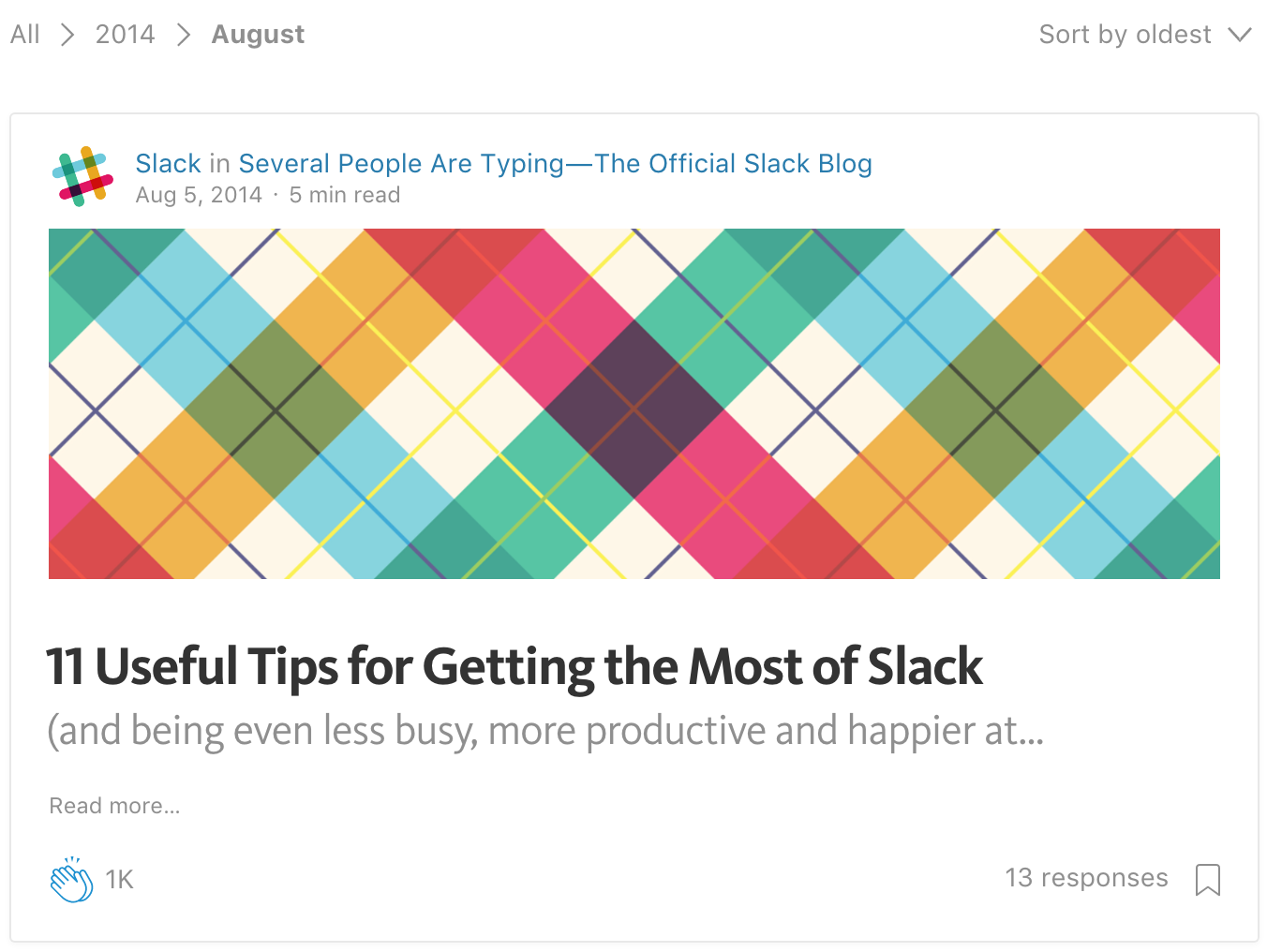
How did Slack manage to get this much engagement on their very first article? Well, one theory goes back to a feature that makes Medium an awesome marketing tool: it lets you bring your followers from another platform.
In other words, if you sign up with Medium through either Twitter or Facebook, Medium will automatically import all of your followers that already have a Medium account.
And as you’ll see in our social media analysis below, Twitter has been the backbone of a lot of Slack’s success and customer interaction. So, Slack probably leveraged this by signing up with Medium through their Twitter account to quickly reach their first 100,000 Medium followers.
You can do this by connecting your Twitter handle inside your Medium Publication Settings:
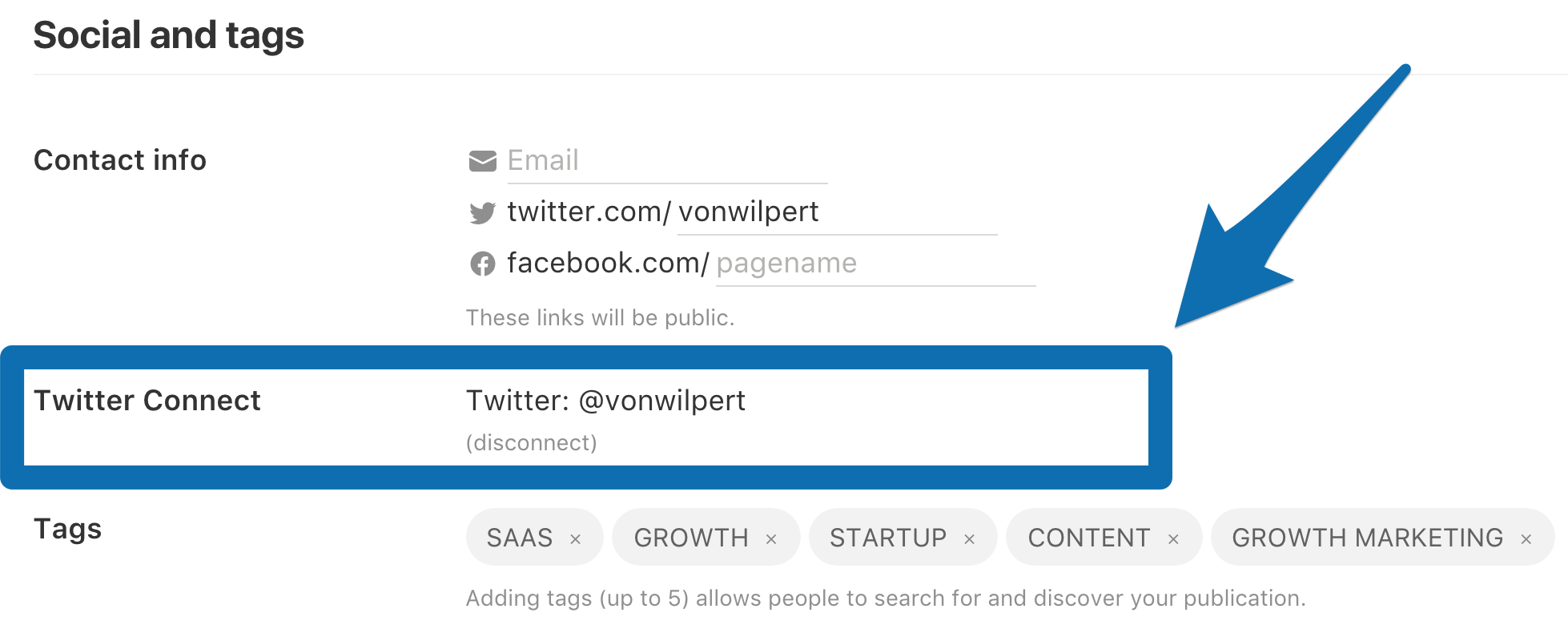
The takeaway: If you’re launching a new Medium publication, make sure it’s connected to your company’s Twitter or Facebook. This will give you the best chance of growing your Medium following and referral traffic to your website (Slack did this and got over 1,000 people to recommend their first Medium article).
[Tip #8] The PPC Traffic Funnel Based On 3 Core Keywords You Can Swipe And Deploy In Minutes
Slack founder and CEO Stewart Butterfield has openly admitted that paid marketing hasn’t been his priority nor his main traffic driver for Slack.
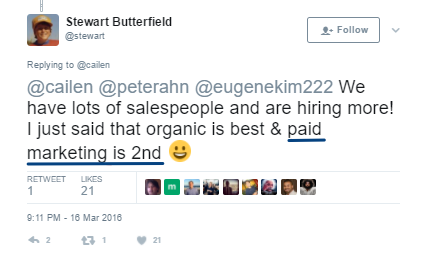
A tweet by Stewart Butterfield on Mar 16, 2016 [Source]
Yet, paid marketing still plays a pretty big role in Slack’s success, accounting for nearly 400,000 website views monthly.
These are the top performing ads for the 2,100 PPC keywords Slack is bidding on:
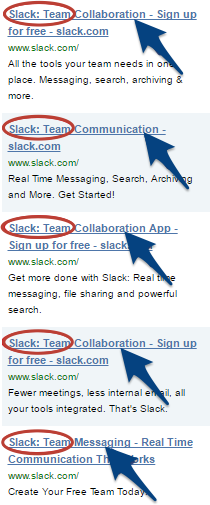
As you can see, every single one of these ads has the word “Slack” and the word “Team.”
Each headline also contains one of the following 3 words: “Communication,” “Collaboration,” or “Messaging.”
The ad copy varies between benefit-driven (ie: fewer meetings, less internal email, all your tools integrated) and feature-driven (ie: real time messaging, file sharing, and powerful search).
Clicking on any of the top performing ads will bring prospects to one of two places: Slack’s homepage or Slack’s product page.
Here’s the entire paid search funnel for ads that direct prospects to the product page:
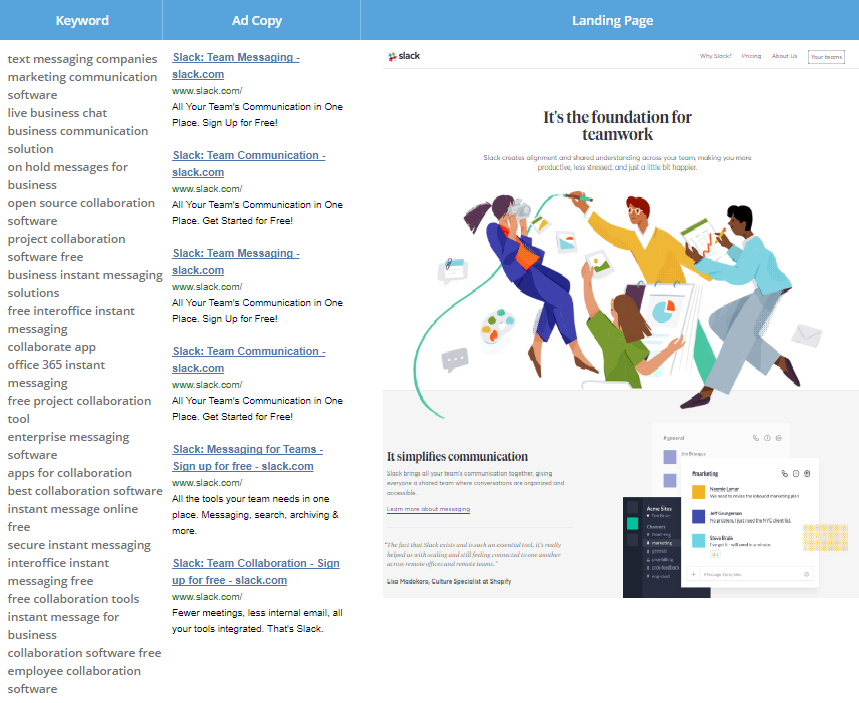
As you can see, they are using a single landing page for a lot of different keywords.
Usually, a company would create several different landing pages based on the searcher’s keyword intent. But this particular landing page must be working well enough for Slack that they can just direct all keywords here.
(I’ll show you why this is a great landing page later in tip #9.)
You can see that most of the keywords are some variation of “collaboration”, “messaging” or “communication.”
Slack has the challenge (or the benefit, depending on how you look at it) of having to appeal to a wide audience. But clearly, Slack has found three words that seemed to have universal appeal, no matter the searcher.
You’ll also see that there are a few competitor branded keywords (ie: “office 365 instant messaging”).
As far as I could tell, Slack isn’t investing in retargeting ads. Per this discussion in 2015, they weren’t. And I haven’t found anything implying they are now:
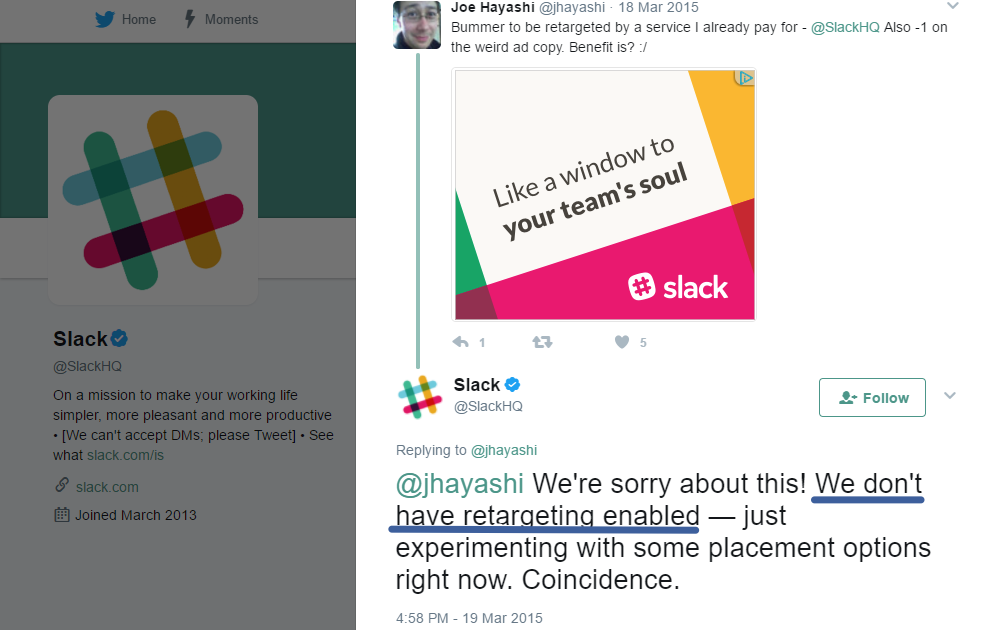
A tweet by SlackHQ on Mar 19, 2015 [Source]
In general, it’s safe to say that Slack’s focus with their advertising has been more on brand building than anything else. This means they’ve also experimented with some more ‘traditional’ forms of advertising to help get their name out:
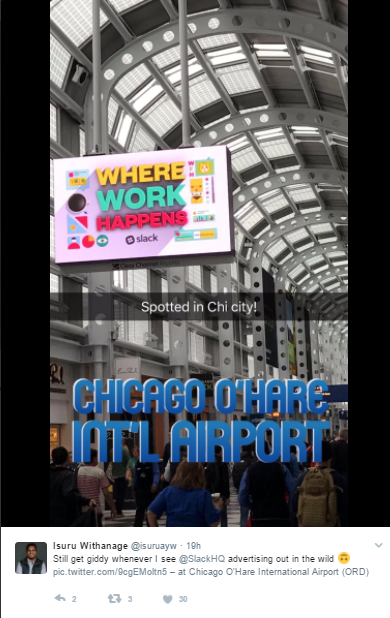
A tweet by a Slack Account Executive on May 22, 2017 [Source]
One of Slack’s most memorable ventures into traditional advertising happened when they took out a full-page ad in the New York Times. This ad served as a challenge to Microsoft, who was soon to launch their own competing product.
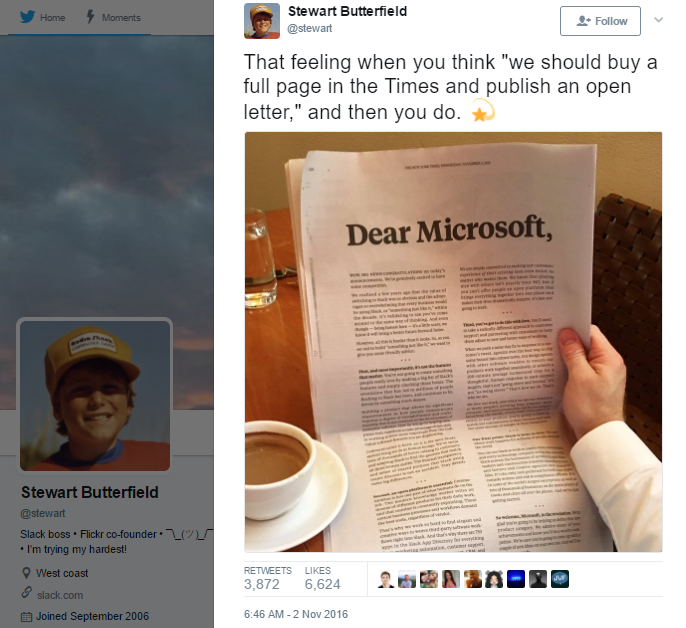
A tweet by Stewart Butterfield on Nov 2, 2016 [Source]
Slack then sensibly published the whole ad on their Medium publication, thus providing them yet another outlet to get their name out and spread the word. Clearly, it worked.
If you look back to our analysis of their top performing Medium articles above, you’ll notice that this article snagged the top spot with 14,600 shares.
I can’t say for sure whether or not this ad brought more paying customers, but it sure got a lot of media attention and probably created some loyal fans.
The takeaway: If you are trying to target a wide audience with your PPC ads, find the handful of short-tail keywords that have a universal appeal in your market (no matter the searcher), and turn your product page into a landing page that converts your paid traffic into new customers (Slack does this with keywords that are some variation of “collaboration”, “messaging” or “communication.”)
[Tip #9] The 8 Section Hybrid Product Landing Page You Can Use To Convert Organic AND Paid Traffic
As mentioned above, Slack only has 2 landing pages that they currently use for their paid ads – either their homepage or their product page.
Slack’s homepage (up until just a few days ago), looked like this:

Recently, Slack revamped its homepage to make the design a little more streamlined and make their unique selling proposition (USP) more specific.
They’ve kept the motto and the vibrant “Get Started” CTA button.
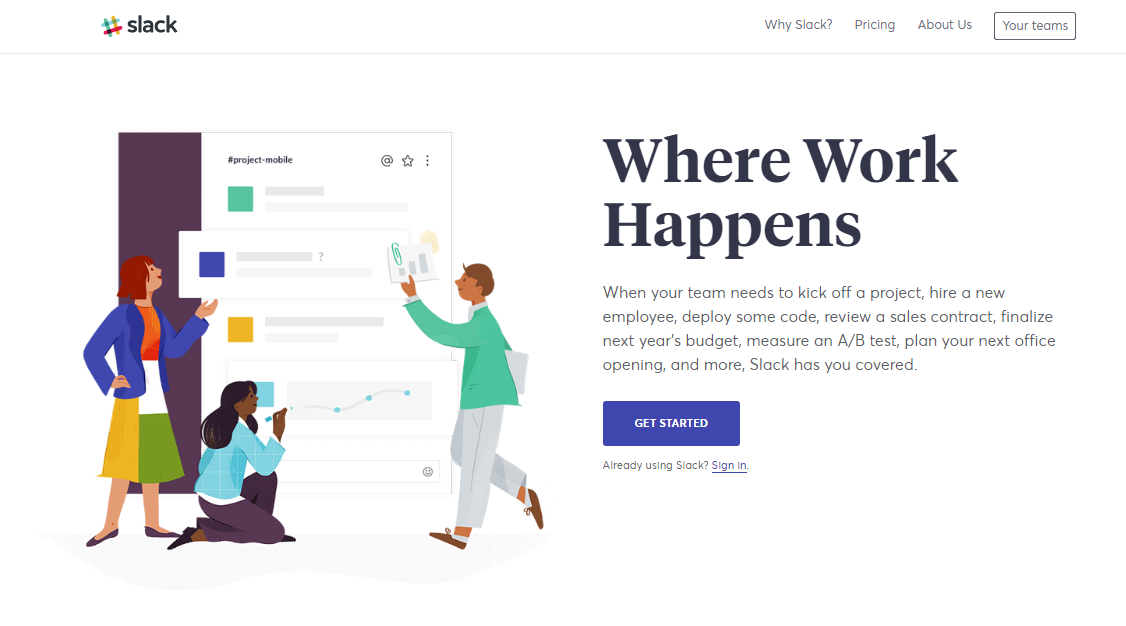
I found out that they are doing the following a/b test on the above-the-fold section of their homepage to see which performs better:
Test A: “Get Started” button, then email address opt-in field (2 step opt-in)
Test B: Email address opt-in field directly on the page (1 step opt-in)
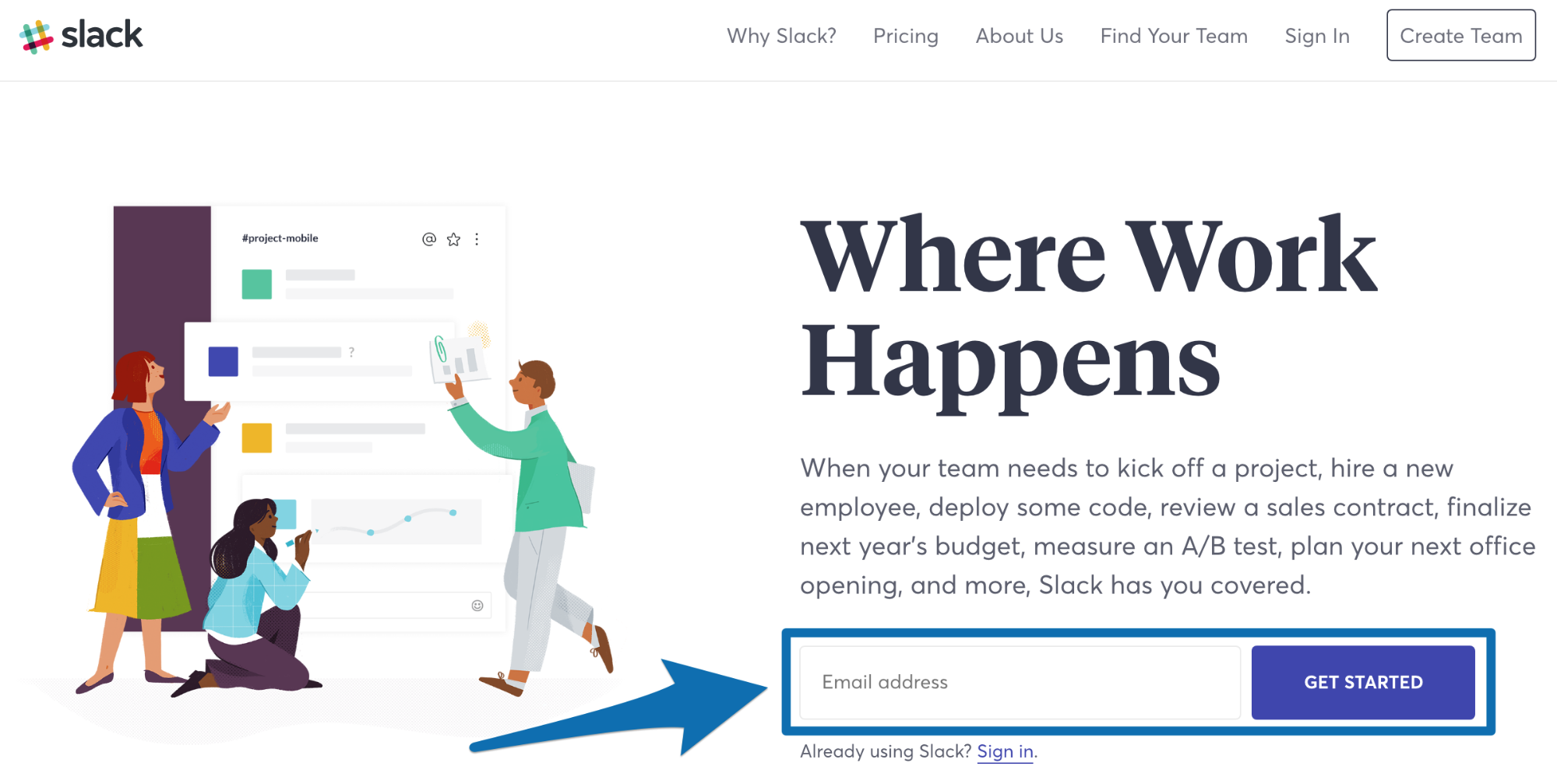
Click here to reveal the a/b testing tool Slack uses to test their homepage
The biggest change from their redesigned homepage is that they’ve added some social proof to the homepage (which is something that basically any homepage can benefit from):
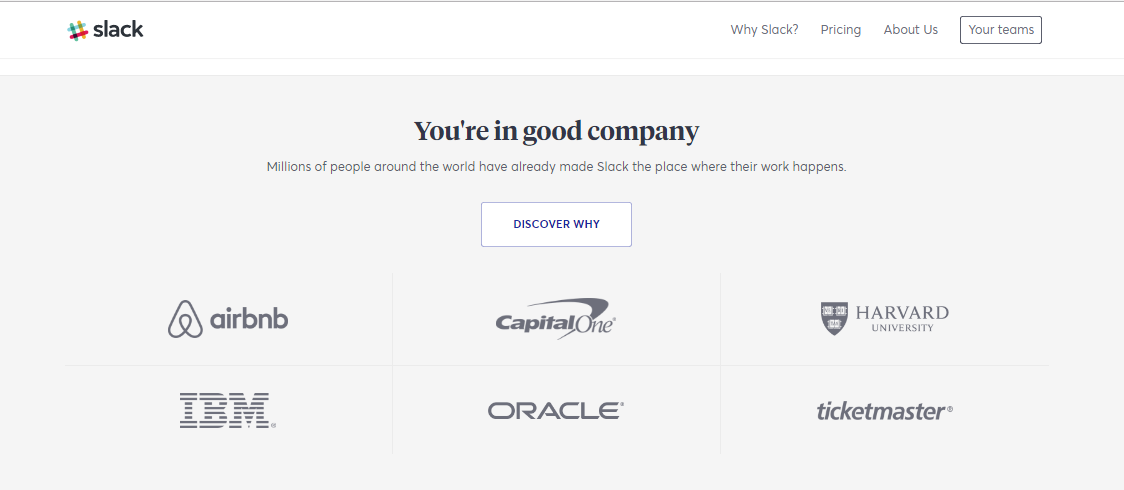
Slack’s homepage is where they direct people who find them via branded keywords:
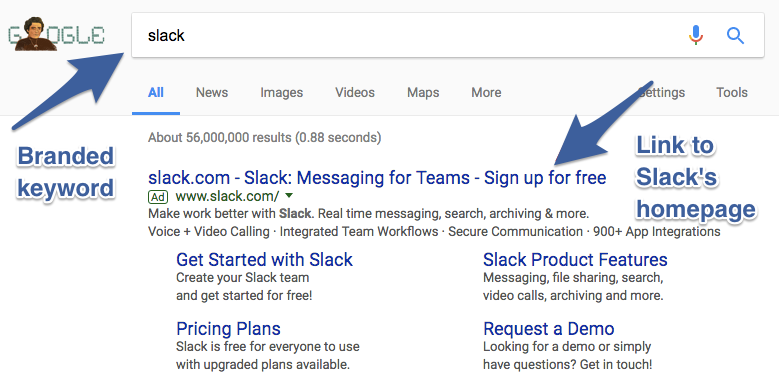
After all, if someone already knows enough about Slack to type their brand name directly into the search bar, you hardly need to overwhelm them with extra info or a full-fledged sales page. Really, all they need is an easy next step. In this case, clicking the “Get Started” button.
On the homepage, the audience can get more info if they scroll down to the very bottom of the page.
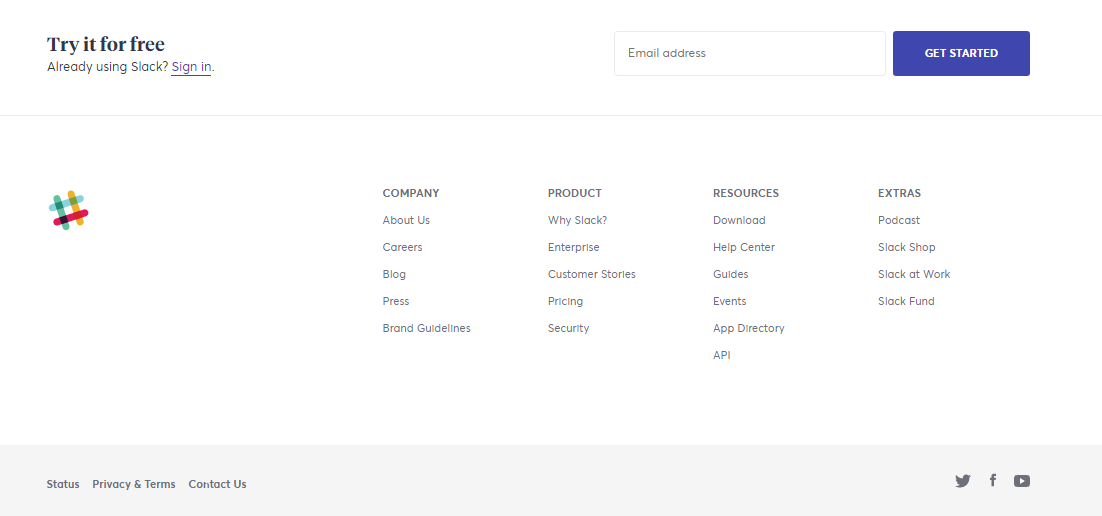
But by making this section not stand out, it prevents the reader from getting distracted and instantly draws their eyes to the CTA button as the only logical next step.

Beyond the homepage, Slack also uses their Product page as a landing page. Interestingly enough, this isn’t a special landing page that can only be found by clicking on a paid Slack ad. You can actually find it by clicking on the “Why Slack?” text link in their website footer.

Though the Product page is certainly longer than the homepage, it is by no means text heavy; instead, it revolves around a very streamlined message and a lot of white space.
Just like the homepage, the Product page recently underwent a makeover with a shortened page, simplified copy, less sections, less features and benefits.
Slack is taking advantage of its own brand awareness. So many people already know what Slack is, they don’t need their landing page to do as much of the “selling for them.”
Let’s break down the page scroll-by-scroll to see what’s going on.
Here’s what the landing page looks like above-the-fold:
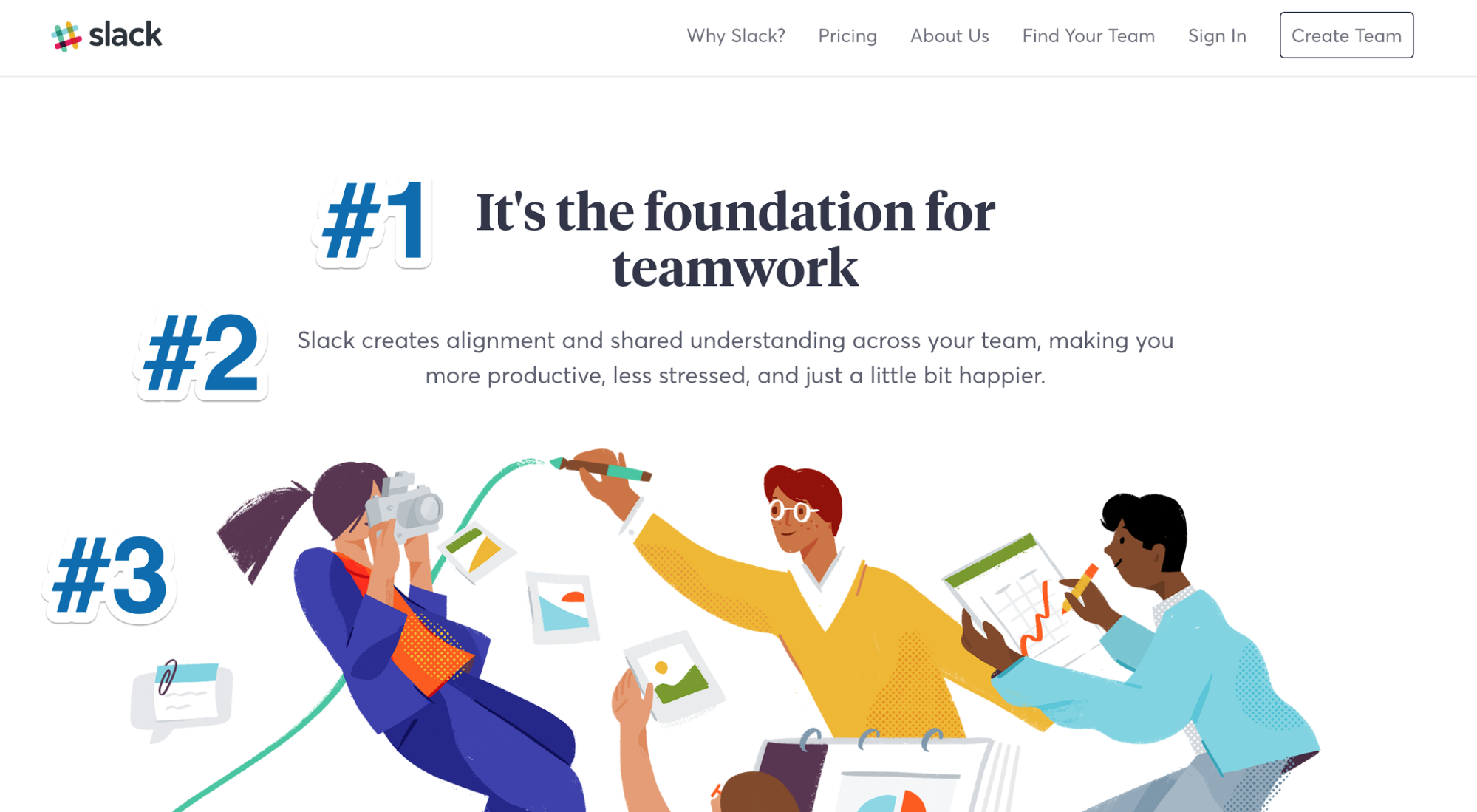
- A prominently displayed 5 word headline is the first thing a person sees. It tells you very simply what Slack is for.
- A simple, concise description of what Slack offers. Misunderstanding due to bad team communication is a pretty universal pain point, so it’s good to give the audience a reminder of what Slack does early on.
- A large modern image with a team of 4 collaborating together. Big, high-res, well-designed images like this are being used more and more by big companies today as people are used to scrolling down a web page.
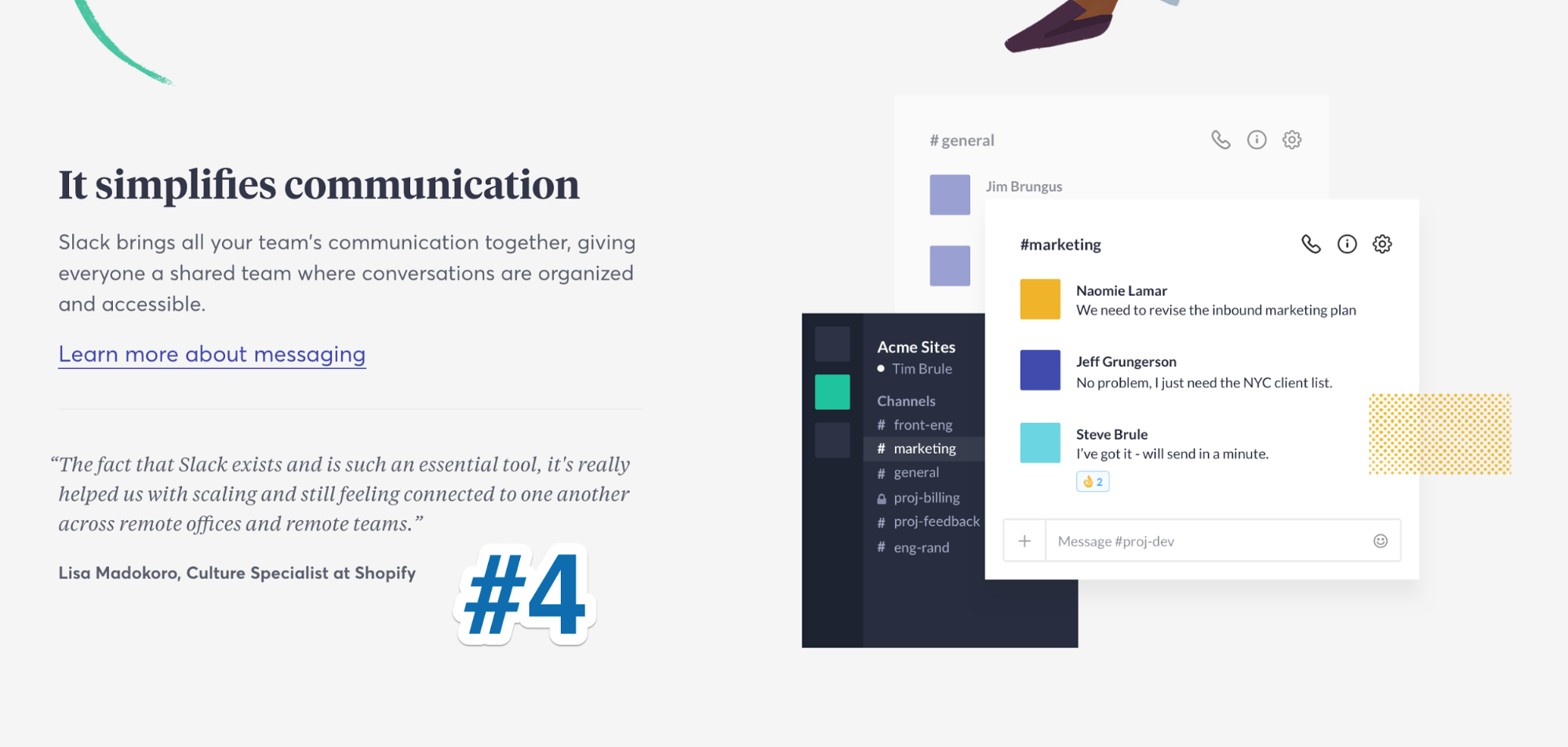
4. A quick breakdown of Slack’s primary benefit: “It simplifies communication.” This is followed by a one sentence description of how this will benefit you and a screenshot of what team communication looks like inside Slack.
Golden Nugget: Use a social proof testimonial related to the benefit you are showcasing directly below it. It will convert even higher if you use a headshot of the real person and a testimonial from a well-known brand name (Slack is doing this with their Shopify text testimonial).
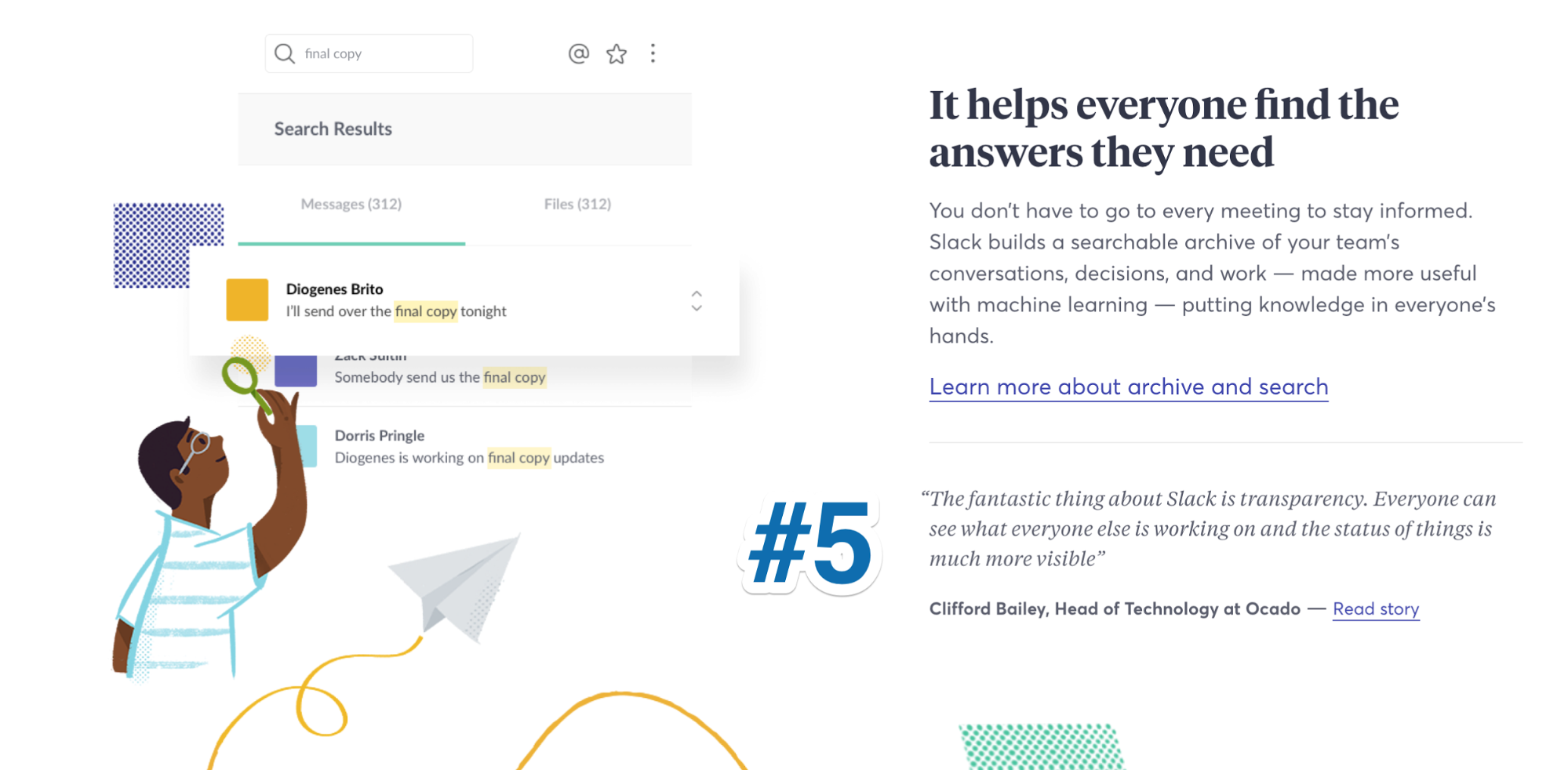
5. This section is a feature-benefit hybrid. The benefit is that Slack “helps everyone find the answers they need.” People are able to get this benefit with Slack’s “archive and search” feature.
Combining these two persuasion elements into one helps Slack get their message streamlined for shorter, simpler copy.
It also makes people more impressed with this “archive and search” feature… a feature would be decidedly unsexy and unexciting without the explanation of the benefit.
And of course, this section is followed by another powerful bit of social proof.
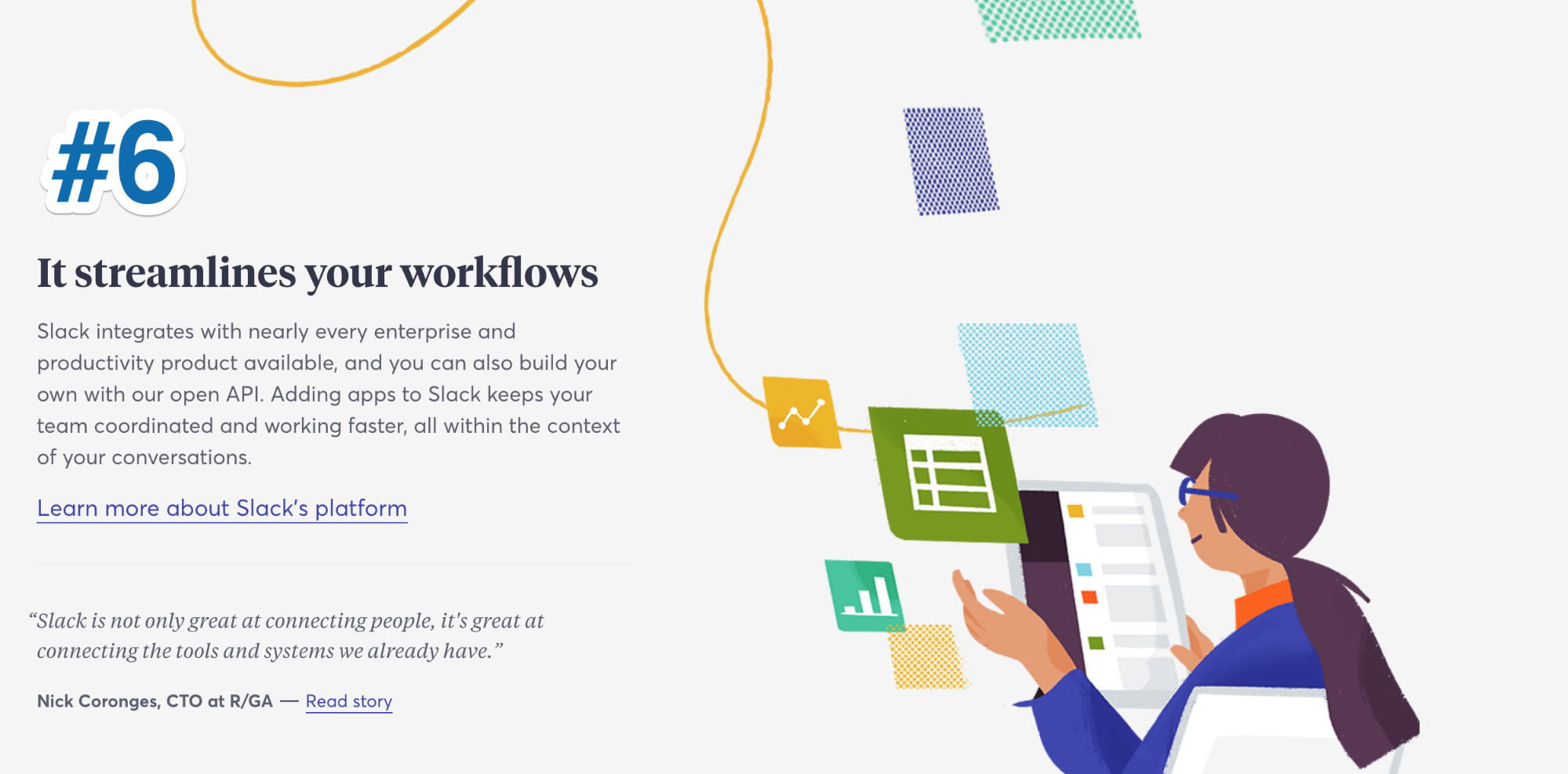
6. Here is another benefit that comes thanks to Slack’s many integrations. No one likes transitioning to a new software or program, so this is the exact message that people want to here: the transition will be easy and you can easily tie it into all the products you already use and love.
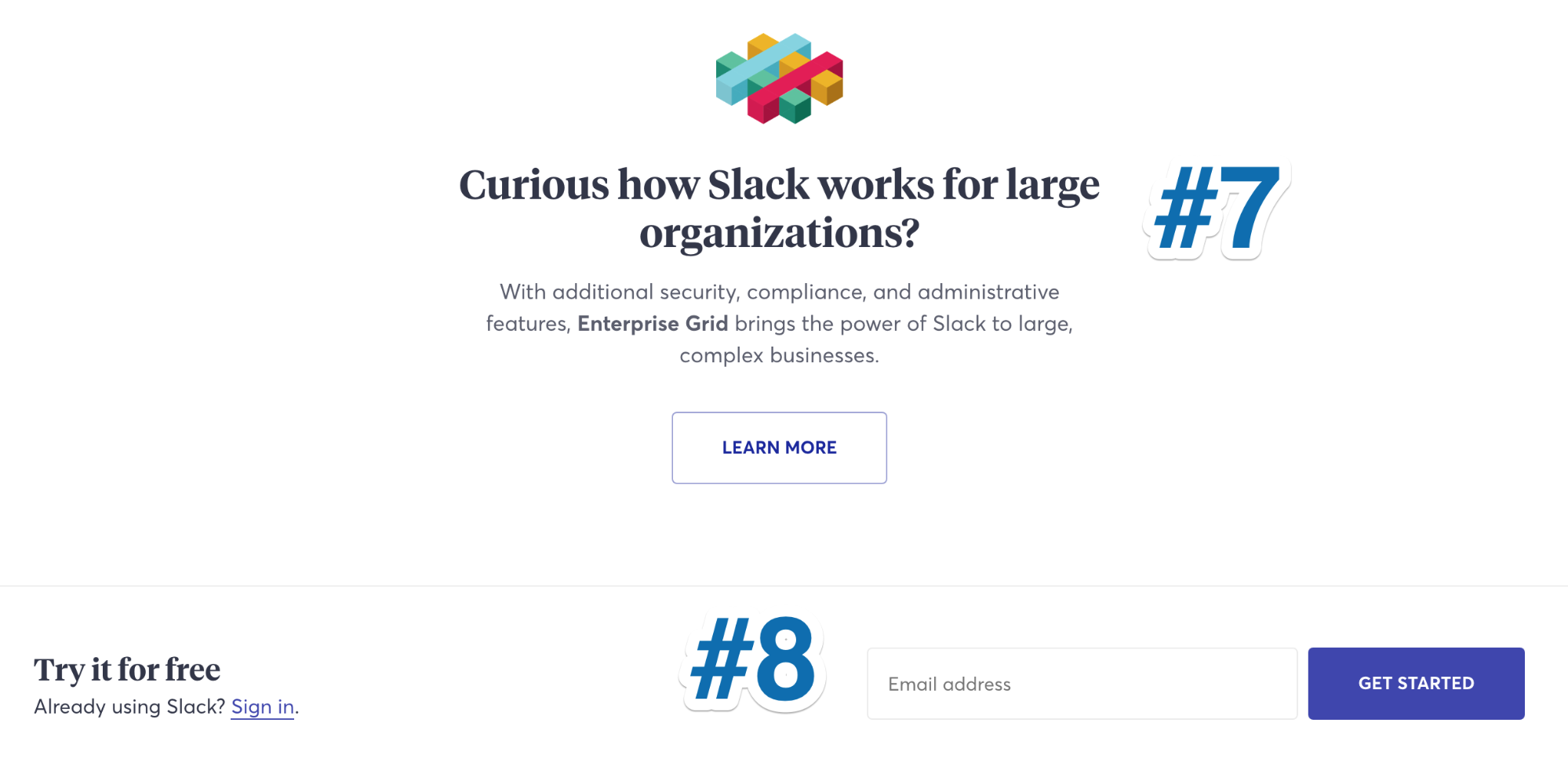
7. The last section on the page to filter large enterprise leads to Slack’s Enterprise page.
8. The landing page’s primary CTA. By highlighting the fact that Slack is free, what reason would a prospect have to not click the CTA and try it out?
Take note of how there is no mention of Slack’s paid plan on the entire page. The emphasis on the free plan makes prospects feel like they are NOT being sold to, which in turn gives people a more favorable impression of Slack overall.
The takeaway: Your product landing page doesn’t need to be overly complicated. Keep it simple (Slack does this with a clear headline, a subhead that addresses a universal pain point, minimal imagery and lots of whitespace, short descriptions of features and benefits, lots of social proof, and having prominent CTAs that emphasize their free offering).
[Tip #10] The “Sticky” App Directory SEO Ranking Strategy That Works Without Content Marketing
Based on Slack’s organic search results, they have 638 keywords that rank on the first page of Google, and 345 that rank on the first page of Bing/Yahoo!.
This number of first page ranking keywords is significantly lower than what you find with many other high-performing SaaS companies. When I analyzed HubSpot here, for example, I found that they have an impressive 5,905 first page keywords on Google and 10,440 on Bing/Yahoo!.
But there’s a pretty easy answer to this. Unlike HubSpot, who puts a lot of effort into building up their SEO through content marketing, Slack has adopted different methods.
So while HubSpot will show up for search phrases like “how to use excel” because they wrote a blog post on the topic, Slack hasn’t created any content marketing articles for the express purpose of SEO and organic traffic.
Instead, a big part of Slack’s organic SEO success comes from Slack’s App Directory landing pages.
Here’s an overview of some of Slack’s top organic keywords with the highest global monthly search volume by rank on the first page of Google to give you an idea of how this works:
| Keyword |
Global Monthly Search Volume |
Organic Listing |
Rank |
| google drive | 6,120,000 | https://slack.com/apps/A0F7YS32P-google-drive |
7 |
| google calendar | 1,830,000 | https://slack.com/apps/A0F8149ED-google-calendar |
6 |
| windows | 201,000 | https://slack.com/beta/windows |
5 |
| trello | 110,000 | https://slack.com/apps/A0F814C4R-trello |
6 |
| jira | 90,500 | https://slack.com/apps/A0F7YS3MZ-jira |
7 |
| wunderlist | 60,500 | https://slack.com/apps/A0F7VRHTN-wunderlist |
7 |
| giphy | 49,500 | https://slack.com/apps/A0F827J2C-giphy |
4 |
| pingdom | 12,100 | https://slack.com/apps/A0F814AV7-pingdom |
4 |
| zapier | 12,100 | https://slack.com/apps/A024R9PQM-zapier |
3 |
| todo | 8,100 | https://slack.com/apps/A0HBTUUPK–todo |
5 |
As you can see here quite obviously, the people who type in these keywords aren’t specifically searching for Slack. Yet, people who search for these other products often see Slack’s website.
Why?
Well, the first thing to note is that each and every one of these are products that have integration capabilities with Slack. So, Slack took advantage of this to make sure they often end up on the first page search results whenever anyone searches a product they integrate with.
To do this, Slack has an individual webpage for each of their integrations. Some are created by App Directory Partners, while major integrations are often created by Slack themself.
For Slack created integration webpages, each webpage follows the same simple 3-part sequence for their SEO strategy:
#1. The name of the integration in the webpage’s headline
#2. One sentence explaining what the integration is
#3. One sentence explaining how the integration works with Slack
Here’s an example of what this looks like for the integration Pingdom:
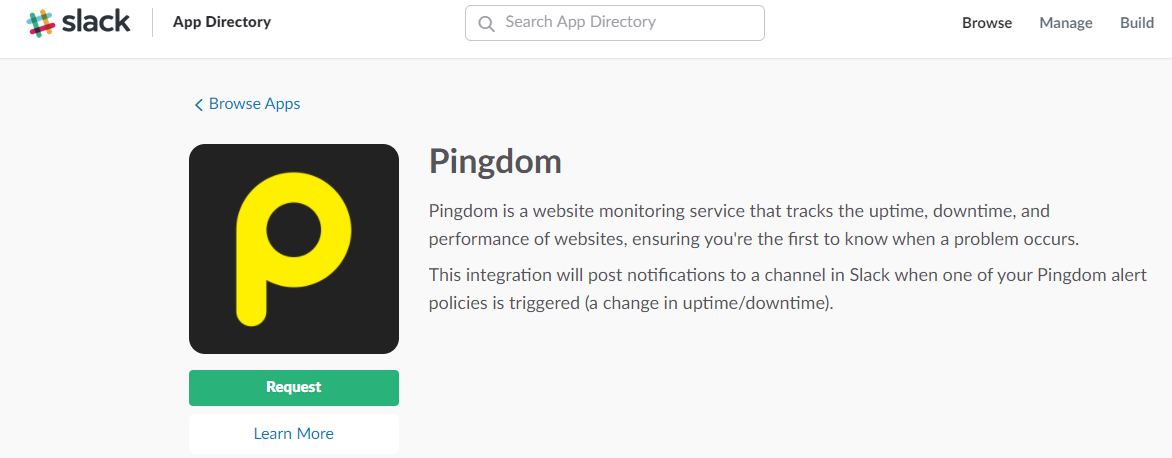
Take note, the smart folks over at Slack know that having an App Directory is critical to their long term success. Why? Because the more integrations people add to their Slack, the more “sticky” they will become as their whole work becomes fully integrated into Slack.
Slack literally becomes (as their slogan so aptly describes)… “Where work happens.”
The takeaway: If you have the type of product that you can create integrations for, don’t miss out on the SEO boost you can get from an App Directory. Plus, more integrations = a “stickier” product.
If you don’t have the type of product that you can create an app directory for, don’t miss out on the chance to make your product “stickier.” Find ways to partner with other complementary products and services your customers already use.
Not only will this help you tie your product tighter to your customers’ lives, but you can also create your own little SEO boost by showcasing these partnerships on individual landing pages.
[Tip #11] The Viral Invite Loop That Generated 4 Million Daily Active Users In 4 Years
Slack is a champ at getting free advertising out of its users (their Twitter “wall of love” is a perfect example).
Another way they do this is through their viral invite loop. The viral invite loop is a powerful growth strategy that encourages others to share your app or product.
Here’s how it works:
- User signs up
- % of those users invite their friends (or in Slack’s case, other team members)
- % of those friends/team members become new sign ups
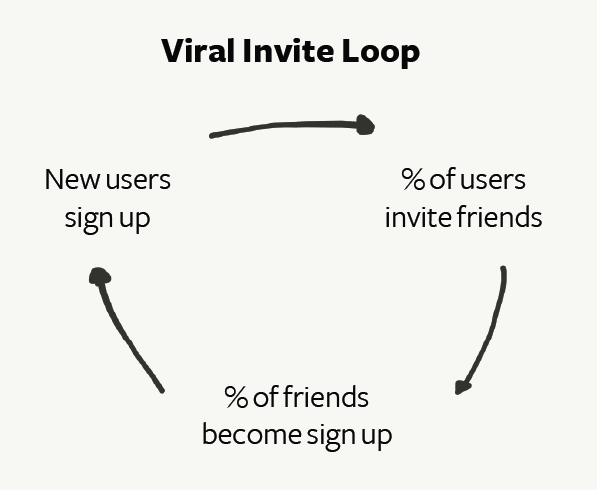
Viral Invite Loop [Source]
The most important thing here is to make it very easy for people to invite others. Slack does this by asking new users to invite people when they first sign up:
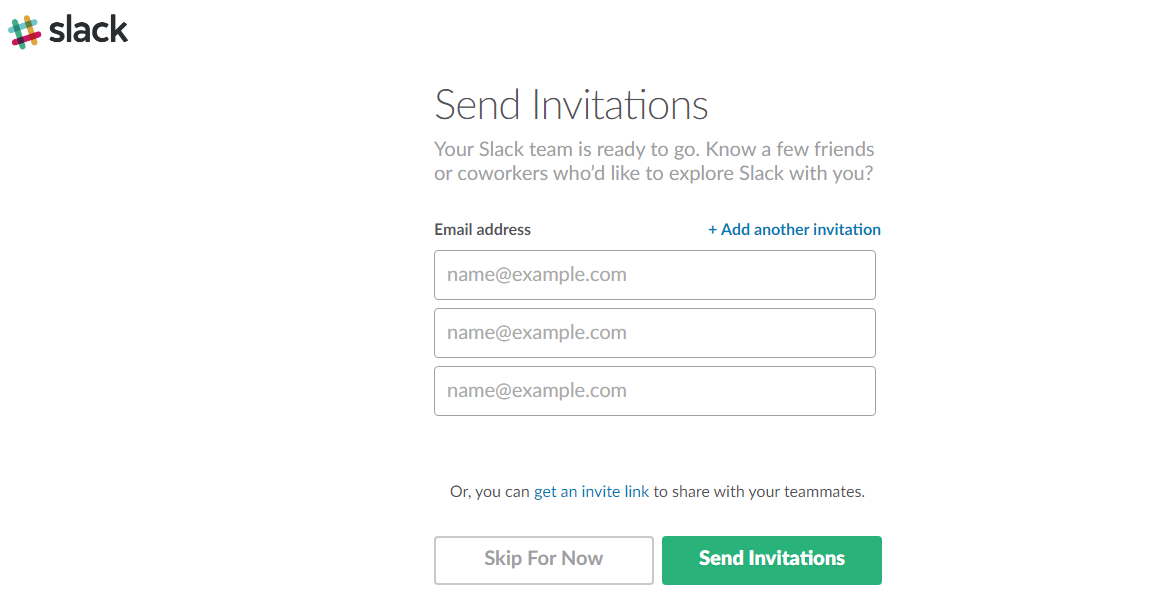
Reminding people to invite other users during the first onboarding tutorial:
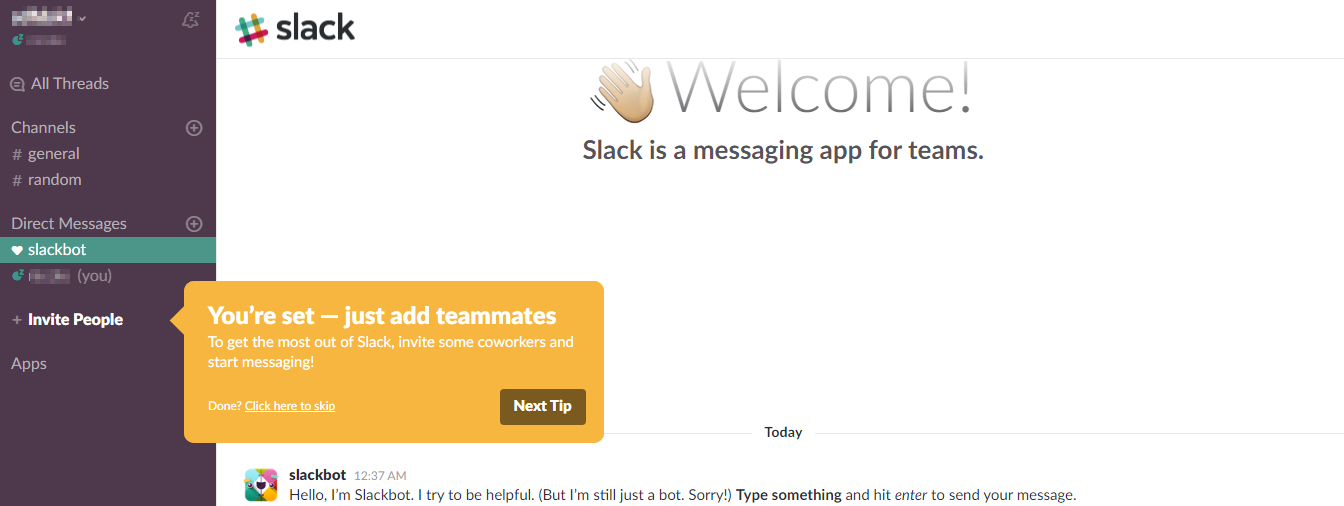
And reminding you again through emails:

Once you install Slack, it’s natural that you’re going to need teammates to communicate with.
This helps add more and more daily active users to the Slack platform.
This is a common strategy for social platforms (like Snapchat) which become more valuable with the more friends you have.
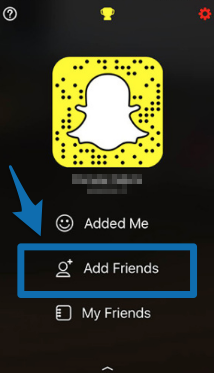
Slack and Snapchat aren’t that difficult to get people to share because you can use them together with your coworkers and friends.
But if you don’t have a product that seems natural to share, you have to give users an extra reason to do so. This is what Booking does.
They give users (and the person the user invites) a $25 bonus for new sign ups. This obviously gives people a pretty good reason to share Booking with their network.
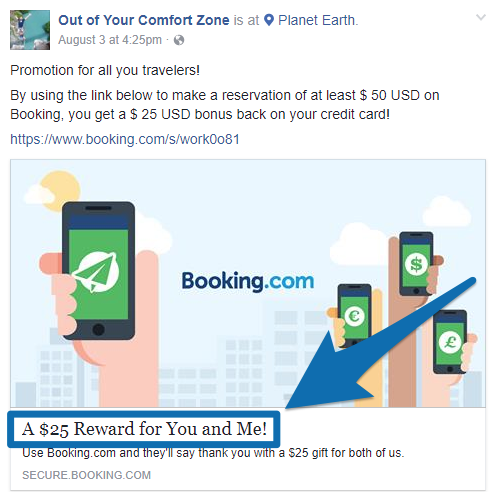
The takeaway: Make it easy for customers to share your app or product and make sure you give them a reason to do so. This could be so customers can interact with their invitees on the platform (which is what Slack and Snapchat do).
If that doesn’t make sense for your product, give customers another reason to share your product (which Booking does by offering a cash bonus).
[Tip #12] The Reverse Pricing Model You Can Use To Make Your Customers Say “Wow” On Social Media
One thing Slack is well-known for (and something that impressed me as soon as I heard about it) is their innovative “fair billing policy.”
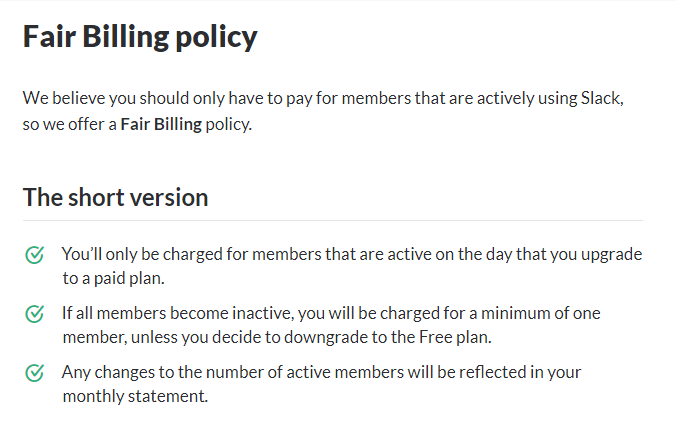
In simple terms, here’s how their policy works: if a Slack user stops using the software for 14 days, Slack will give you your money back through prorated credit.
Slack’s Head of Customer Success explained this himself at the very end of this panel at SaaStock London (29:25 to 30:40).
Of course, this gives Slack users just another reason to love the app (and that’s the kind of love you need if you want word-of-mouth growth).
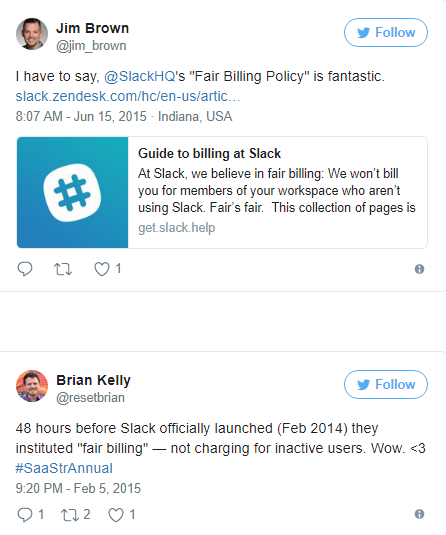
But there’s an added bonus to using this unique billing policy. As a user consumption model, it forces Slack’s growth to correlate with their customers growth. Otherwise, this happens:
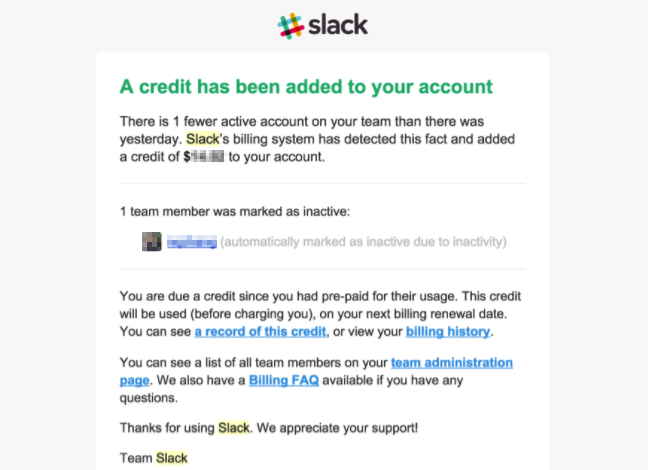
The email Slack sends you when you get credit back
Sales people can’t just sell an account and then move on.
For this reason, Slack MUST make sure their product is the best it can be and fully integrates into their users’ day-to-day work… or they won’t get paid.
As of today, this type of “fair billing policy” isn’t very widespread nor has it been adopted by any of the big names in SaaS besides Slack (for now, at least).
But I was able to find a few SaaS companies bold enough to treat their customers like humans and only make them pay for active users (kudos to these guys for embracing the SaaS pricing model of the future before everyone else catches on):
Auth0:
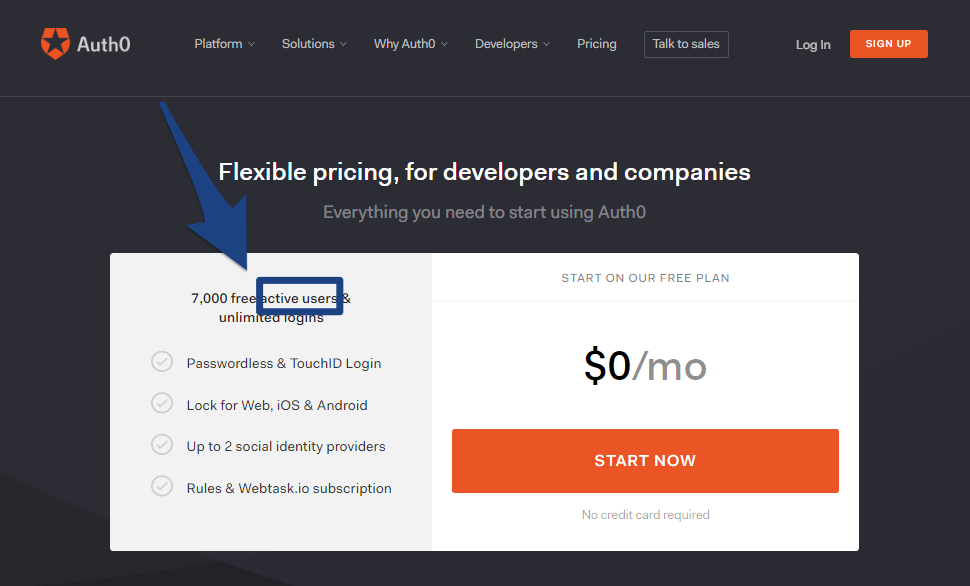
SweetProcess:
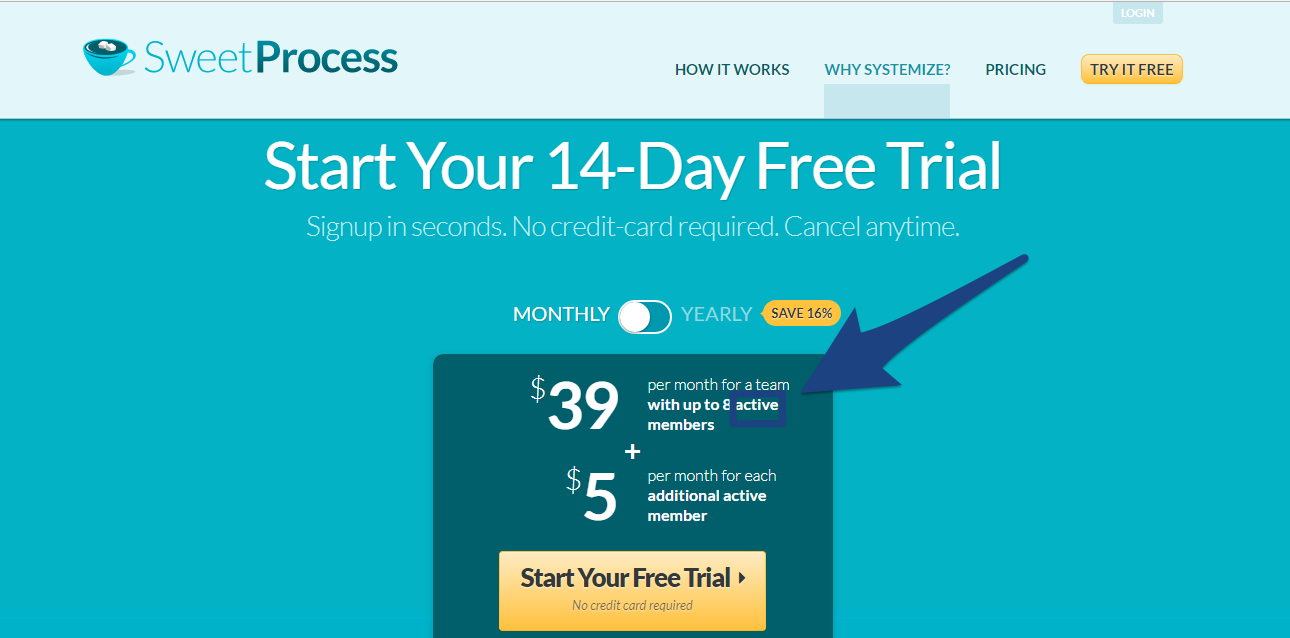
Expensify:
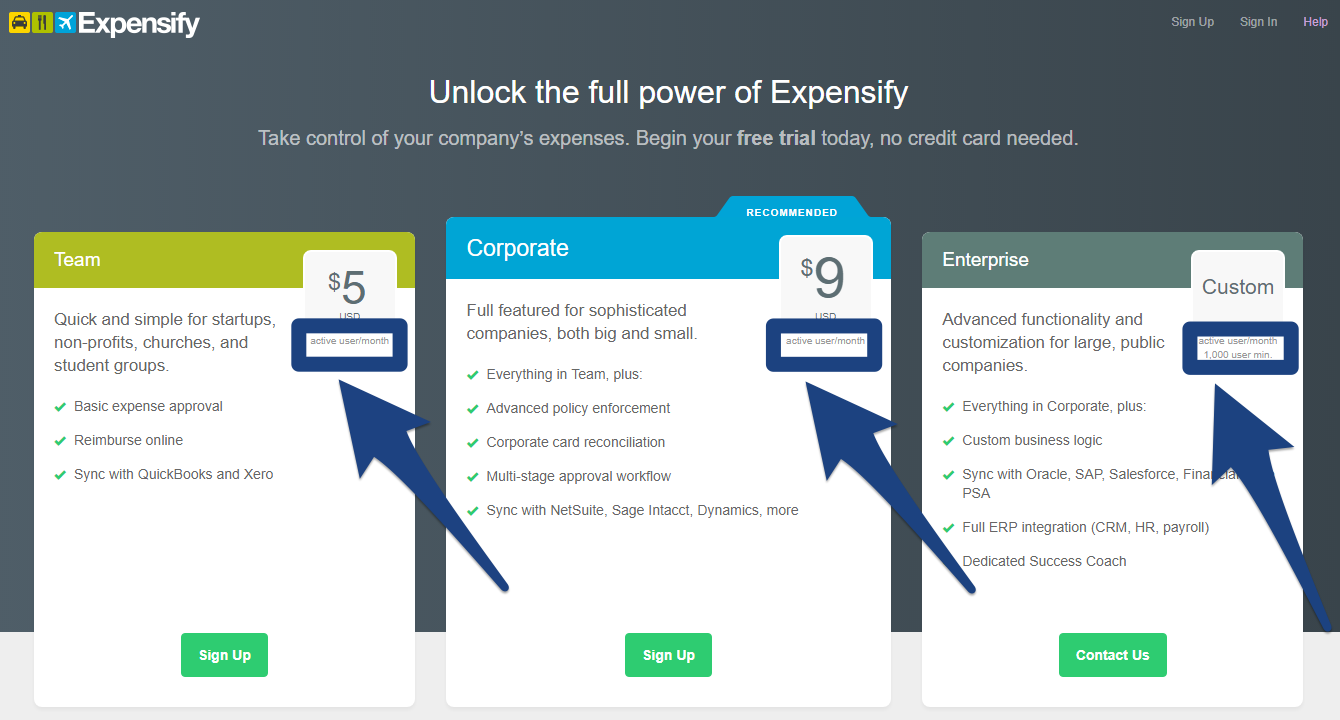
Most enterprise software pricing is designed to charge you per user regardless of how many people on your team are actively using the software (for example, if you buy 1,000 seats but only use 100, you still get charged for 1,000).
Slack’s pricing model is 100% counterintuitive to that model.
Yet, Slack wouldn’t be using this policy if it didn’t work.
And before long, this will be the pricing strategy for all SaaS companies who are truly focused on customer success.
The takeaway: If you’re in SaaS and think this “fair billing policy” could work for you, give it a shot and see what happens. If you’re not in SaaS or aren’t ready to try out this policy, find another way to make your pricing system transparent and customer-centric.
[Tip #13] How Slack Converts 30% Of Their Free Users To Paid Users
Here’s the final piece of the puzzle. Sure, Slack could be using all of the tips above to get free sign-ups… but what’s to guarantee these become paying users later on?

Of Slack’s 4+ million active users, 1.25+ million are paid users.
The first thing to look at is the layout of Slack’s freemium model.
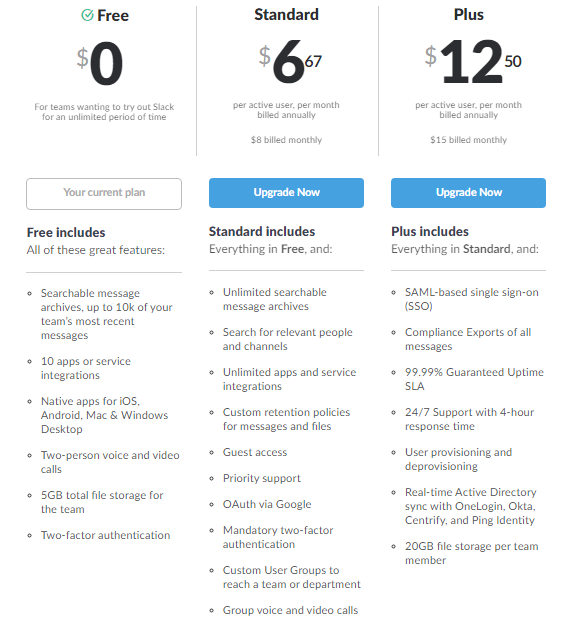
As you can see, Slack’s “free” plan still comes with a bunch of good benefits and is perfectly usable on its own.
So, to see how Slack really won over those paid users, I signed up for a free account to see how they’d try to convert me. Here are the 2 big things that jumped out during my experiment:
1) Slack has an excellent onboarding process
2) Slack isn’t salesy in the slightest
Let’s analyze the first item: Slack’s excellent onboarding process.
Part of what holds other companies back from converting their freemium users is that these customers often don’t completely understand how to use the product or they don’t truly realize all the product’s benefits and applications.
But Slack has an extra challenge in overcoming this. Slack isn’t a product that’s sold to a single person – but one sold to a team. Which means they have a lot of people to convince.
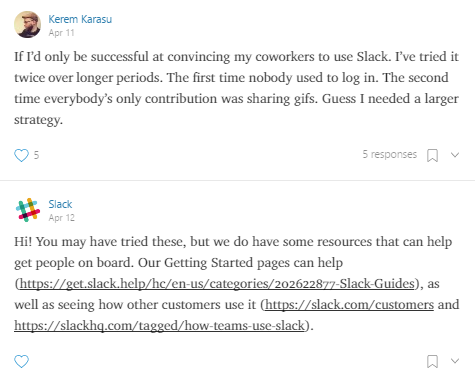
Slack responding to a Medium comment as an “extension” of their customer onboarding
And one of the best ways to convince people is by creating a super smooth (and easy) onboarding process for users. They do this not only to make things easier for individual users, but also so those individual users can help get their entire team on board.
Here is a quick example. As part of Slack’s onboarding process, all new users who login for the first time are instantly taken through a tutorial.
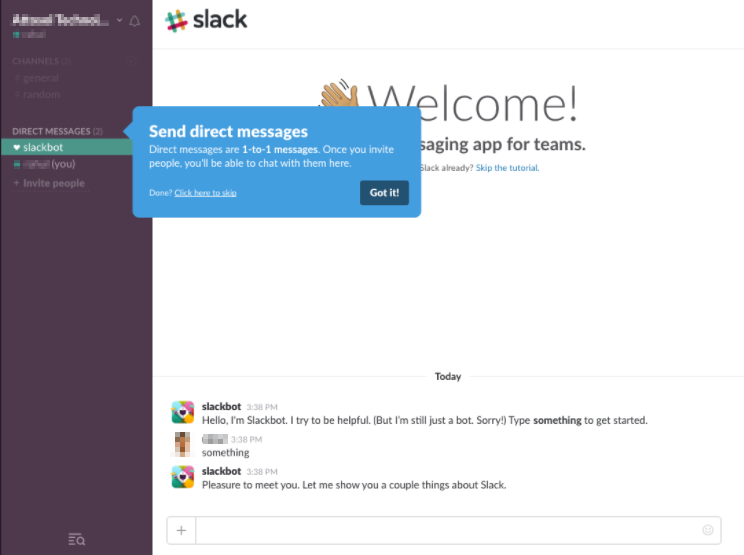
Slack’s Help Center is also very well laid-out, showing new customers exactly what steps they need to take next.
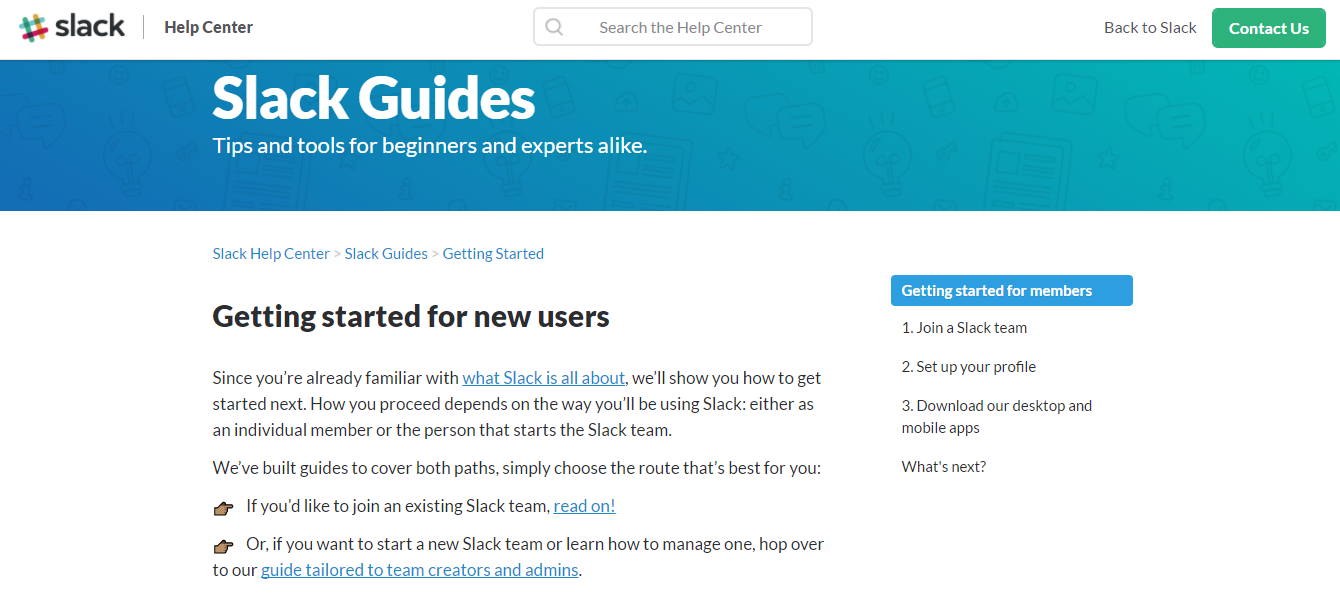
Plus, they also have a ton of helpful info on their YouTube channel and in their Medium publication.
In other words, they make sure users understand 100% how to use Slack, as well as how all its features and benefits work.
Now onto the second item: Slack’s non-salesy sales process.
When I went through the process of a free sign-up, here’s what I discovered: I never, at any point, actually felt like I was being “sold to.”
First of all, if we look at Slack’s homepage again, you won’t even find an option to sign up for the paid plan.
And after clicking that blue “Get Started” button, you are automatically taken through the process to become a free user… without encountering a single message about the paid plan the entire time.
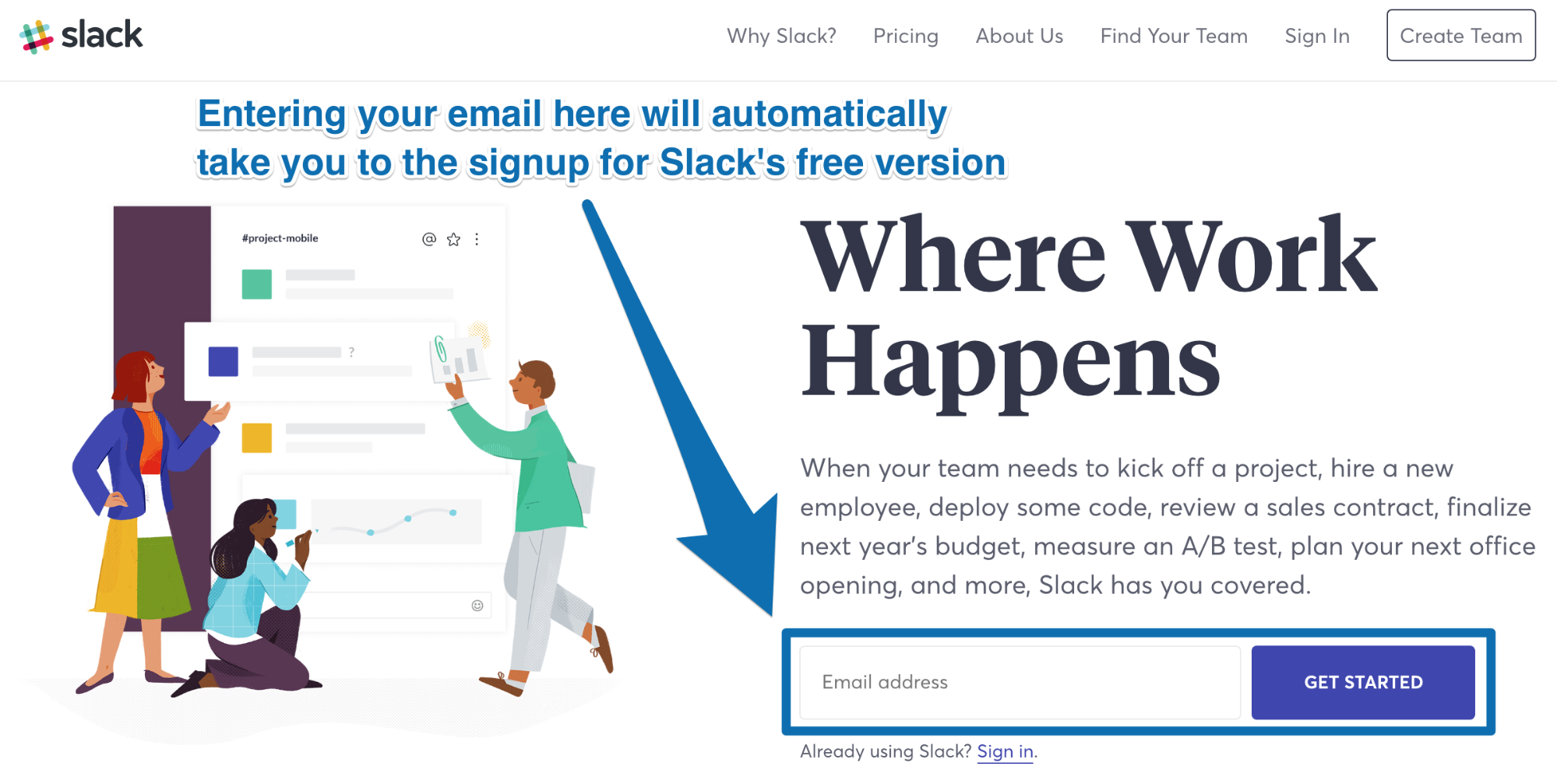
When you look through their website, you’ll also notice they don’t have any sort of process in place for gathering full lead data or contact info.
After I signed up, I kept waiting for some sort of email autoresponder campaign aimed at getting me to convert to a paid user. But yet… there was nothing.
Not a single email was sent to me with a mention of upgrading to the paid plan.
Instead of pushing customers towards the paid plan, Slack set usage limits after a high level of user consumption has taken place. Limits like this:
- Chat history that stops after 10k messages
- File storage that stops after 5GB
- App integrations that stop after 10 apps
This lets the customer decide when they are ready for the paid plan.
This keeps Slack ultra-accountable for providing awesome onboarding and a comfortable user experience to not only get them to sign up for the paid plan, but keep as many active users as possible.
Is Slack missing out on conversions by not trying to upsell its free users? Maybe. Though it’s obviously not bothering them enough to change it.
But the proof is in the data: Slack has a product that people can’t stop talking about and has converted 1.25M+ of their 4M+ users into paid users.
So for now, at least, Slack will remain true to their “not a salesperson” voice.
The takeaway: You can nail your free to paid conversion rate like Slack does by giving users a fully functional freemium product and creating a high converting onboarding process to help push customers toward the paid conversion.
13 Key Takeaways From Slack’s Billion-Dollar Success
Slack has some pretty atypical brand marketing techniques that have turned them into an impressive SaaS powerhouse.
Here are the 13 key takeaways:
1. You can’t just launch your product and cross your fingers that people will actually buy. Instead, set your product up for success by following Slack’s 4-step launch formula: convince everyone you know to try your product and give feedback, find your “hook,” invite people to try your “preview release” and then launch to the public.
2. Use a different strategy for each social media platform. Slack uses Facebook to update fans, Youtube to drive customer acquisition with professionally produced videos (don’t forget about using that curiosity gap) and Twitter to drive viral awareness with 24/7 customer support.
3. Immerse yourself in the podcast world by sponsoring podcasts your potential audience members are listening to or by creating your own (use this as a chance to make your company “known” for something).
4. Don’t miss out on the power of review websites (like Slack did with G2 Crowd) to level up your short-tail keyword SEO strategy. Encourage happy customers to leave you reviews through email campaigns and pop-ups that promise them some type of bonus.
5. Find a well-known product or service that your customers are using and piggyback off their success by integrating with them. Slack did this by partnering with GitHub and Trello.
6. If you launch a Medium publication, sign-up through your company’s Twitter or Facebook to grow your Medium following instantly.
7. There are certain types of articles that perform best on Medium and have helped Slack skyrocket to success on the platform. The 4 types of posts Slack use are: product updates, product tutorials, practical workplace tips and personal stories. Make sure you adjust your CTAs (like Slack does) to match each type of article.
8. If you target your PPC ads to a wide audience, identify the short-tail keywords that have universal appeal. Then, set up an effective landing page to match.
9. Don’t make your product landing page more complicated than it needs to be. Only include the info your prospects need to opt-in – nothing more, nothing less.
10. Boost your SEO with an app directory (if it makes sense for your product) or try to make your product as “sticky” as possible for your customers by partnering with complementary products your customers are already using.
11. Turn your customers into promoters for your product by setting up a viral invite loop.
12. If you can create a pricing system that doesn’t make customers feel like they’re getting screwed over, they’ll love you for it (Slack does this with their “fair billing policy”).
13. Getting your customers to convert from free to paid users is tricky. Get a jump on your free to paid conversions by doing what Slack does – give users a fully functional freemium product and create a straightforward onboarding process.
Slack gets 100,000,000 website visitors every month. That’s more than Salesforce, HubSpot, Intercom, Zendesk, Mailchimp, Shopify and every other software company in the world.
But it’s not all about that.
Slack is a role model for what it takes to build a software product loved by both small businesses and fortune 100 companies alike.
The secret to marketing is… build a great product.
The first version of this growth study was originally published on OpenView Labs.
Related Articles
%(relatedarticles)
Add A Comment
VIEW THE COMMENTS